

Steam to Digital


















From steam to digital: 150 years of 150 of the Railway Industry Association

Contents
Introduction
Supporting members since 1875 – the since –
UK’s oldest rail trade organisation.
An industry comestogether
Unfair practices by railways? Why RIA’s forebear was founded.
Globalised competition… in1901
How India – and US competition –forced the association to develop.
Success by Association: RIA’sleaders
Cooperate, orcompete?
How the association fought for a Germany.
Raising worldwidestandards
RIA and its predecessors have a long a history of shaping best practice.
Homes where itmatters
From Locomotive House to Smith Square House power.

Relatively association – all left their mark.

Relatively few people have led the
Organisation, reorganisation
Suppliers have lived with UK rail reorganisation for over a century.

Storing up ‘goodwill’ Campaigns, consultation, and buying the goodwill of struggling members.
Planning forVictory
The association’s key strategic role during the Second World War.

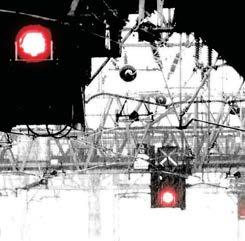





History through RIA’seyes
RIA has always prioritised communication – including including through Railpower.
Expanded and morediverse
Why the Locomotive Manufacturers’ Association reinvented itself in the 1950s.
Wires, wires, wires!

topic – as historic Railpowers show.
Serving the supplychain
How today’s RIA was created for the whole railway industry in whole 1971.
Order… andrepeat
Exports have always been a focus – they certainly were in the 1970s and 1980s.
A powerful industryvoice
trade body for a dynamic sector.

Congratulations from theindustry!
People from across the railway explain why RIA is important to important them.
Voices for nations andregions RIA is active throughout the UK – wherever you are. renewals
Historic celebrations of rolling stock investment in Railpower.
Ideas for a betterrailway Recommendations for government, from digitalisation to skills.
Newdirections…
Light rail, privatisation… RIA grasped new chances in the 1990s.
An expandingmembership
From nine members in 1875, the association has grown to over 400.
Wherenext?
Around the world, rail has an exciting future. RIA will be there.
Join RIA’sstory!
This anniversary publication has been brought to youby
Editor: Tony Streeter
RIA editor: James McGowan
RIA author/archivist: Hywel Maslen
RIA research and support: David Clarke, Annabel Parker
Publisher: David Lane
Designer: Matt Chapman




It is published by The Railway Industry Association. RIA is a company limited by guarantee registered in England & Wales Reg. No. 10036044, VAT Reg. No. 239 2834 44. Registered
Smith Square, London SW1P 3HQ.
From Steam to Digital: 150 years of the Railway Industry Association was the produced on behalf of RIA by David Lane Publishing

All rights reserved. No part of this publication may be reproduced or transmitted in any form without the written permission of the publisher.
© Railway Industry Association, 2025.
From steam to digital 150 years of championing the railway industry
It is hard to imagine the world
150 years ago from the vantage point of 2025. With the UK morphing from being an Industrial Age powerhouse into a post-industrial service economy, the country’s railway industry has played a crucial part of this historicalarc.
The forerunner to the Railway Industry Association (RIA) trade body was the Locomotive
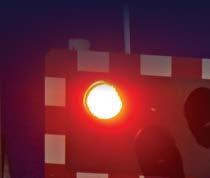


Manufacturers’ Association (LMA), which came into being in 1875. Its purpose? To represent, defend, and promote the interests of locomotive manufacturers. The LMA did this by lobbying Ministers and other parliamentarians in Westminster, by raising relevant
by championing its members’ interests in the media. In later years, the LMA’s successor would continue to do exactly



that, as RIA still advocates for the railway industry with politicians, policymakers and today this includes engaging with the devolved nations and regions of the UKtoo.
A consistent theme over those 150 years has been the tension between short-term and often reactive political priorities of successive governments and

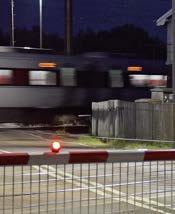

the long-term strategic needs of the industry, which operates on much longer time horizons, often more than 30 years. Supporting rail suppliers in the UK rail market has been a prime purpose of RIA, but identifying new export markets for its members has also become ever more important, especially as rail networks and the need for
increased around the world over the years. Overseas opportunities can be hugely fruitful for rail businesses, and the rail supply chain in its fullest sense has commensurately adapted, evolved and responded to the changing needs of what is now a globalised railmarket.
Advocating for the long-term potential of the UK railway industry and its contribution to the wider UK economy has been a constant throughout RIA’s history, as we seek to make the case for the greater good of the railway, whether economic, social orenvironmental.
However, LMA and now RIA have also sought to excel at a technical level, to ensure RIA champions not just a bigger railway industry but also a better and safer one too. RIA has always worked with its members to cultivate innovation in rail technology and safety, and has collaborated closely with other railway industry bodies throughout

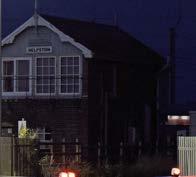


its history, whether for example with the then British Transport Commission, British Railways Board or today’s NetworkRail.
As the oldest trade body in the UK railway industry, RIA has helped lead the response in times of national and international crises, including during and in the aftermath of the World Wars, critical trade disputes and, most recently, the Covid pandemic. The current RIA team is hugely proud of the role the LMA and earlier incarnations of RIA have played in helping keep the country running periods.

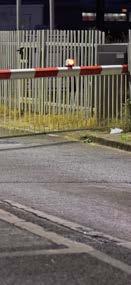
For an industry that helped power the so-called ‘second wave’ of the Industrial Revolution, the railway retains a hugely important role in the current Digital era, both in the UK and internationally. Countries around the world are looking to boost productivity and enable opportunities to increase employment, housing and access to leisure, whether in towns and cities, or in the country’s more rural areas. Classic, high speed, and light rail can all play their integrated part in connecting people and communities around the UK and developing rail as the backbone of a modern, 21st Century, nation.
This book will, we hope, go some way to explaining how the UK railway industry, and in particular its fascinating supply sector, has supported the UK’s economic and social development in the past. And it will also highlight some of the steps it is currently taking to enable advances in the future, as rail restructures and brings track, train and all the various strands of rail closertogether.
We hope you, whether someone with a professional interest in the railway industry, or whether you are simply an enthusiast, enjoy this account of the role UK rail suppliers, and their longest-serving national trade association, have played in this colourful story.


Darren Caplan RIA Chief Executive
Noel Travers RIA Chair
History and modernity side by side... TONY STREETER
1875: an industry comes together









TONY STREETER

TONY STREETER
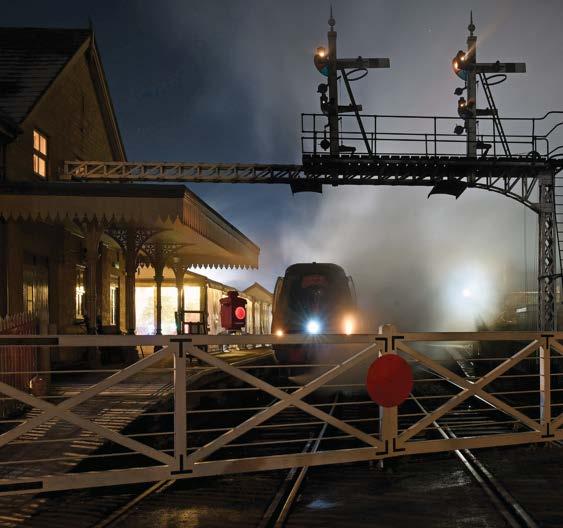
TONY STREETER

The railway in 1875

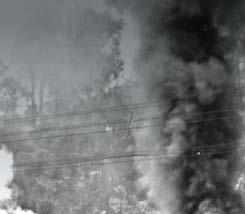
India, exports and global competition

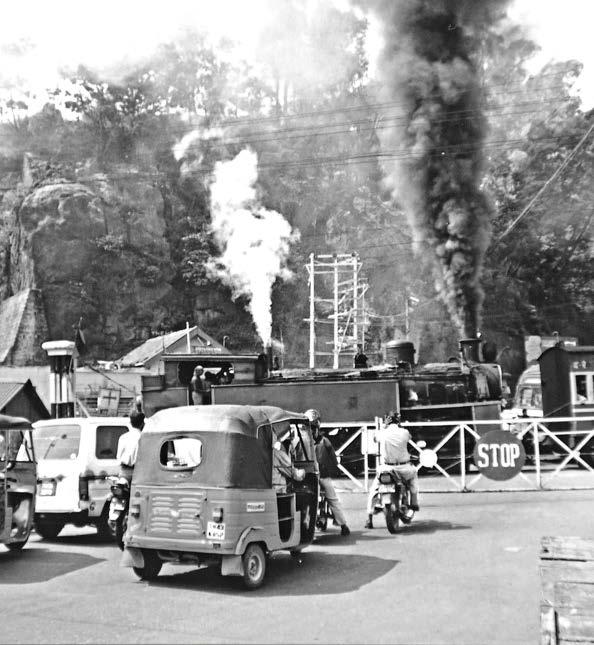
1875 to 2025: from the LMA to RIA
1909
Despite succeeding in its early aim of stopping a railway company building locomotives to sell to another, the need for ongoing LMA vigilance is shown with a similar case nearly a quarter of a centurylater.
Having discovered that the Great Central Railway
for the purpose by the Great Northern Railway at Doncaster Works, the association contends that this goes beyond the railways’ authority. The LMA’s argument is successful, with the Commissioners and the Court of Appeal ruling that the agreement between the Great Northern and Great Central railways exceeds their statutorypowers.


Globalisation. In the 21st Century it’s a key and controversial topic. Yet even a century ago that was the case for locomotive manufacturers, operating as ever globalisedmarkets.
Whereas the Locomotive Manufacturers’ Association had come into being due to domestic competition, it was exports that took up much of the organisation’s time by the turn of the 20thCentury.
Indeed it was India, then part of the British Empire, that would bring topics such as price, delivery times and standardisation to the fore. Events there would also raise the question of how much members should act on their own, and how much they should cooperate as a collective through theorganisation.
After the Indian government ordered locomotives from a German manufacturer (see also page 26), it was Glasgow MP John Baird who in 1901 expressed his concern that UK suppliers had not beenchosen.
The response from the Secretary of State for India, Lord George Hamilton, will hardly have reassured the LMA’s members. He complained of a lack of standardisation, claiming that UK
standardised locomotives and stock, nor deliver the required numbers of locomotives in the time needed. A German
supply the locomotives twice as fast as any UK counterpart – and 25% cheapertoo.
Members were no longer only competing among themselves and other domestic suppliers, but internationally too. However, what’s also notable about this episode is that individual members initially fought their case through the pages of The Times newspaper, rather than calling on theLMA.
Glasgow manufacturers (Neilson, Reid; Dübs; and Sharp, Stewart), criticised the UK system of exports, under which ‘a colony of consulting engineers in Westminster derive their incomes from the supervision of contracts for bridges, permanent way, and rolling stock for our colonial and Indianrailways.’
They added that ‘a perfect army of inspectors, spread all over the country, live absolutely upon thesecontracts.’
The companies argued that the American way of doing things – where railroads supported a vibrant industry by purchasing locomotives from dedicated manufacturers rather than building engines themselves – was the ‘natural order’. They were critical too of the Indian railways, contrasting that country with South Africa which, they felt, had introduced
OPPOSITE PAGE:
Although US and German companies competed with association members, they were not the only source of locomotives for export. Southern India’s Nigiri Mountain Railway rack line initially used Beyer, Peacock locomotives – but Swiss-built ‘X Class’ engines arrived from 1914. TINA GOEBEL
One of the arguments in the disputes of the early 20th Century had been about Indian standardisation, and this would return later. In the 1920s, a committee was set up to create standard designs, with the process being overseen by the British Engineering Standards Association (now the British Standards Institution – BSI). See also page 28.
1914
Although there have been putative attempts to cooperate rather than purely compete with locomotive manufacturing companies in Germany, this is brought to an abrupt themselves in a new situation – whereby they are primarily suppliers of munitions to government rather than being
able to pursue locomotive sales for privately-owned railways either at home or abroad. The value of a trade association is once again shown as members combine
However, the LMA is already also looking to the future, and helping members plan for a postwar world.
modern standards... and ordered its locomotives from the UK.
Kerr, Stuart, which had put in the cheapest price but did not get the Indian contract, independently contested some of Lord Hamilton’s statements.
While all these letters were exchanged outside the aegis of the LMA, the association was not idle. In December 1901 Ephraim Hutchings sent a letter attacking claims that
£30,000. He also presented evidence that concerns about unfounded, and challenged assertions that inspection regimes stopped Indian companies from buying British. engagement by the LMA in support of members’ exports.
Nor would this be the only time that potential orders from India would be a concern.

In the 1920s and 1930s, there were twin worries about proposals to build locomotives domestically in the country, as well as the cost of transporting locomotives from the UK and
What’s more, despite the lobbying activities of the LMA, locomotives for India were being ordered from the USA. A growing demand for political autonomy also manifested itself in some resistance to trading with the UK.
Then in 1947, the LMA was faced with a new situation – upon independence and partition, India became two countries: India and Pakistan.
Pakistan emerged as an early advocate of diesel traction, largely due to being reliant on poor coal from India.
In India meanwhile, the LMA collaborated with the country through its subsidiary LM Co. to establish a new locomotive Works
Agreement included the supply of expertise as well as of parts. Shortages of steel would later hamper the collaboration, and the agreement was ultimately ended in 1954. Even so, the subcontinent remained a key area of focus for individual members.
Perhaps even more pertinently today, companies around the world would surely sympathise with many of the issues LMA members faced decades or even a century ago. For, while the technologies may have changed, many of the challenges are the same.
1917
The importance of public relations is not new… and nor are complaints to the press. The editor of the Ministry of Munitions Journal receiving end of a protest from the LMA. His mistake? Printing an advertisement for locomotives built for British forces in France… by American companies.
the Federation of British Industries, later to become the Confederation of British Industry (CBI).
1918
Although the ‘war to end all wars’ has yet to conclude, the LMA starts the year with two reports from its new Advisory Committee. Of those, one covers a topic that
throughout the ages, and which the association will repeatedly return to – standardisation.
A second is something that will be familiar to most trade organisations – a discussion of how to widen the LMA’s scope. American competition is now a concern, and as the association looks to defend its members’
dominated the subcontinent’s railways for many years. Perhaps the most famous locomotives ever to
most were delivered by Glasgow company Sharp, Stewart or its successor North British from 1889, three were built by America’s Baldwin Locomotive Works and the same number were assembled locally. In
TONY STREETER
USA: competition and coordination
While railway companies in the UK built many of their own locomotives at company-owned Works which also carried out maintenance, the situation in the United States was Across the Atlantic, large privately-owned railroads depended on buying locomotives from
as Baldwin, Lima and Vulcan Iron Works (not to be confused with LMA member Vulcan Foundry).
During the 1901 debate about the supply of engines to Indian railways, this point was made by Reid and Company, Dübs and Company, and Sharp, Stewart and Company (which would later combine to become the North British Locomotive Company). They argued that a manufacturer that ‘devotes all his time and attention to one industry should surely be able to sell at a lower cost than the actual production of similar work in a railway workshop, while still
A further criticism made by LMA members of the UK’s railway companies was that they were unable to keep accurate records of the split between locomotive building and repair, given that both
activities were undertaken in the same Works.
Meanwhile much of the UK criticism of USproduced locomotives was similar to that made against those built in Germany (see page 26): that they were able to be cheaper because they were less well constructed. The argument that UK regulations were too restrictive was the same too.
Standardisation was one reason mooted for the success of American
being introduced in South America, for example, a natural advantage.
UK and American industry was coordinated during the Second World War (see page 38), but concerns about US competition arose again immediately afterwards: in May 1945, even before the war had ended, the LMA debated whether to try to agree spheres of interest for the respective industries.
A small number of American locomotives had run in the UK even in the decades before the war. However in the 1950s fears also arose that, with the British Transport Commission moving towards dieselisation, US companies might win orders for the new type of traction over
interests in the looming postwar world, it seeks common ground between them on various matters including pricing, allocation of orders and even establishing a central agency for sales. However, the proposals go nowhere.
Perhaps showing how important locomotive manufacturers and the LMA have become to UK society, the association not only has a Knight as chairman (Sir William Lorimer), but two others as well: Sir William Collingwood (Vulcan Foundry) and Sir William Peat (Robert Stephenson and Co.).

members, with both new and secondhand examples becoming widespread across the globe. During the Second World War the respective UK and US industries were coordinated to meet military demand, and US Army Transportation Corps locomotives even worked in the UK before being shipped to the Continent. More than 2,000 American ‘S160s’ were
UK counterparts; that did not happen.
In more recent years, North America’s market has been a target for the Railway Industry Association’s more diverse
1919
membership base, which now encompasses much building. RIA has helped through trade missions and exhibitions.
Henceforth, a new government department will coordinate transport – something that concerns LMA members.
Separately, the LMA once more receives an enquiry in its role at the centre of the industry: it comes from the Ministry of Munitions and is for the supply of boilers for new locomotives being built for the South Eastern & Chatham Railway at Woolwich.
India and China, where this one was seen in 2009. TONY STREETER
Success by Association The leaders since 1875
Many people have industry and its trade body over the years – but the Railway Industry Association has been
fortunate to be led by remarkably few individuals since its formation.
Between them, they link a grouping that was created
task with the powerful and wide-ranging association that RIA has developed into over the years since.
Founding fathers: Sacré and Hutchings
Edward Antoine Sacré
Born in London in 1838 and partly educated in Belgium, Sacré had a passion for trains. After witnessing the aftermath of the UK’s railway boom during the 1840s, he became a member of the Institution of Mechanical Engineers in 1868 and a junior partner at the engineering company Hunt & Sacré in 1874.
Sacré gained experience by assisting with fuel and water experiments under the guidance of Archibald Sturrock, the Great Northern Railway’s Locomotive Superintendent. His skills led to a successful career in London, where he worked as an assistant to the District Locomotive Superintendent at King’s Cross.
Sacré later ventured to Australia, where he took on roles such as Locomotive & St. Kilda and Brighton Railway in Melbourne, and worked as an engineer on the Ballarat railway.
After returning to the UK, Sacré became Works Manager for
the Yorkshire Engine Company in 1872. It was in this role that he discovered that railway companies were entering direct commercial competition with major locomotive manufacturers – leading him to start the process that would culminate in the creation of a new trade association.
Sacré was at the heart of the actions by which locomotive manufacturers legally challenged railway companies. In many ways, his drive, vigilance, and industry knowledge were the catalyst for the collective action that followed; without him, the Locomotive Manufacturers’ Association may never have come into existence.
Sacré died in St. John’s Wood on 26 October 1881. He left behind a legacy of determined leadership and industry-wide impact.
Ephraim Hutchings
who served from 1875 to 1902, Ephraim Hutchings was born in Buckingham on 26 October, 1823.
1875 to 2025: from the LMA to RIA
1920
A new challenge for the established locomotive builders is the presence in the market of extra players – companies that during the First World War had been building armaments. As part of a push to expand overseas sales, the LMA establishes a dedicated subcommittee. It also joins export promoter the British Commonwealth Union.
1921
Some time after Ephraim’s birth, the family relocated from Buckingham to Banbury. However, showing intellectual promise, he was educated at Buckingham’s King Edward Grammar School.
Hutchings initially assisted his father William in his duties administrative skills led him to pursue a career supporting growth in technical education. By 1849, he was serving as Correspondent, Secretary, and Cashier of the later took on a similar role at the Manchester Mechanics Institute.
Dedicated to educating working-class adults, this institute’s mission resonated deeply with Hutchings. In recognition of his contributions, Hutchings remained an Honorary Secretary of the organisation.
In the late 1850s, Hutchings
secretary to Sir James Brunlees, a railway engineer known for the construction of railways across
For suppliers, uncertainty always brings concern – and that can come about during restructuring, whether the new way of doing things is nationalisation, privatisation… or ‘Grouping’. Hence the LMA’s concerns about the 1921 Railways Act. Rather than the multiple private railway companies that have hitherto made up Britain’s network, the Act will amalgamate them into the ‘Big Four’.
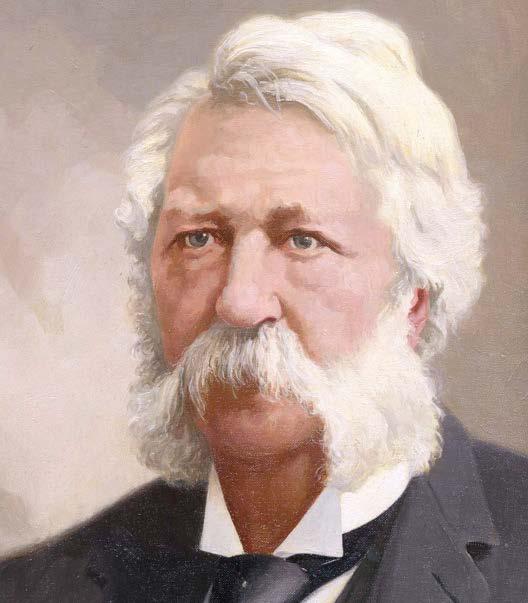
Of the old names, the only famous one to survive will be the Great Western Railway, which will absorb various other lines. The others will be the London, Midland & Scottish Railway, the London & North Eastern Railway, and the Southern Railway. where nationalisation takes place at around the same time; in Britain, the companies will remain independent and to a certain extent in competition with each other. Even so, this is government intervention in the market that dwarfs anything seen to date.
1922
The LMA has a new chairman: Sir Hugh Reid, of the North British Locomotive Company. He replaces another giant of the North British, President Sir William Lorimer, who dies in April.
Ephraim Hutchings. LMA/RIA
Morecambe Bay and the Solway Firth. Brunlees had also been entrusted with overseeing the development of the UK-owned São Paulo Railway in Brazil.
With that railway completed by 1867, Brunlees then sent Hutchings to Argentina, where planning for the development of the country’s railway system was underway.
Hutchings’ skills were in demand after he returned to the UK in 1871. At the time, the nation was embroiled in labour disputes, most notably the ninehour workday strike in Newcastle engineering, such as John Platt of Oldham, Richard Peacock of Manchester, and James Kitson
of Leeds, approached Hutchings to establish an association to protect their interests.
culminated in the founding of the Iron Trades Employers’ Association, for which he served as Secretary until 1890, solidifying his reputation as a relations.
Hutchings was the ideal candidate to become secretary of the Locomotive Manufacturers’ Association. His legal expertise would prove invaluable in delivering results for members over the course of 25 years. Hutchings skilfully secured successful writs, consistently relying on the counsel of Hargrove, Fowler & Blunt of Westminster.
At an LMA meeting in Leeds in March 1876, Hutchings reported that the manufacturers of railway wagons and coaches were also in favour of forming a permanent association. Encouraged, he approached 39 companies. Hutchings’ was appointed Secretary of the Railway Carriage & Wagon Builders’ Association.
Hutchings can now be regarded as one of the foremost engineering associations. Within the position of secretary for three major trade bodies.
Hutchings died, in post aged 80, on 3 May 1902.
The successors: six people and 120 years of service
With the death of Ephraim Hutchings in 1902, the association lost the second of the two people who had done the most to establish it as a powerful trade organisation in its early years.
Remarkably, since then there have only been six people at the helm of the association. Each has served for many years – and in some cases decades. They are:
Gordon Dabell (1902-1933)
Gordon Dabell took over as
time – even though he had and it had become obvious that Hutchings was in failing health.
During Dabell’s years in charge, members had to
are now all in the hands of just four companies: the Great Western, London, Midland & Scottish, London & North Eastern, and Southern railways. See page 20.
change – something that would become somewhat of a trend for his successors too. He guided the association through the First World War, as well as the new domestic landscape that followed: in particular the ‘Grouping’ of the many hitherto private railway companies into the ‘Big Four’.
Dabell was active at the highest
the Prime Minister over what the LMA considered unfair treatment by overseas railways in favouring foreign suppliers.
Sadly, Dabell’s latter tenure was marked by illness, and he died in 1933 – more than 30 years after taking up the post.
1925
John Vaughan (1934-1953)
The period in which John Vaughan led the association included both the Second World War and the reorganisation of the railways and industry that followed.
support the UK’s locomotive exports through fostering international cooperation. Vaughan then took the LMA through the war, during which it played a key role not only in helping supply railways, but also in supporting for postwar reconstruction.
Domestically, the LMA remained vigilant during his tenure. Agreement was sought – and gained – from both the Southern and London, Midland
A ‘most serious crisis’. That is how the LMA’s themselves in by 1925. The issue? That seven years after the end of the First World War, Germany’s locomotive building industry has already once again become a genuine threat. German companies have been successful in South Africa and Turkey, as well as in their domestic market.
See page 26.
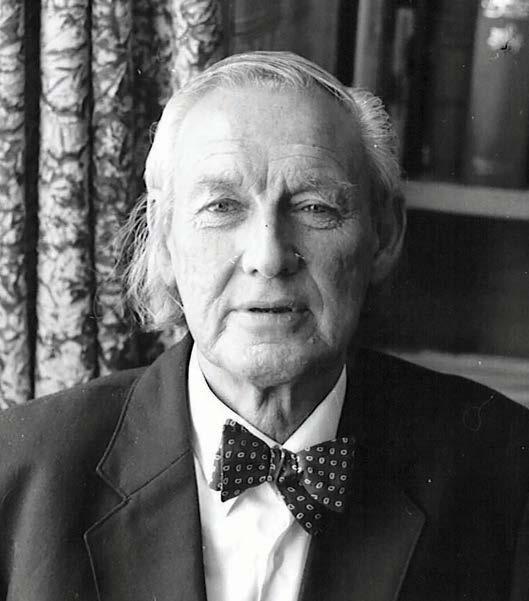
1932
This year though, some relief comes for Britain’s Agreements – a dozen bilateral trade deals Commonwealth dominions and territories.
1934
By the 1930s, the LMA is considering involving to best preserve the market (see page 34). In 1934 that includes considering buying the goodwill of being liquidated. The proposal is not adopted.
George Curry. LAMA/RIA
& Scottish Railways that they would not consider repairs they had undertaken for private companies as setting precedents.
With the late-1940s nationalisation of not only main line railways but also collieries, Vaughan was at the helm while the LMA played its part in agreeing new standard locomotives for the National Coal Board.
George Curry (1954-1985)
George Curry was one of the association’s history, overseeing its transformation from the LMA into LAMA – and later RIA.
Working at a time of intense international competition, the lobbying politicians. It placed new emphasis on providing hospitality at key industry events to promote its work and members, as well as on public relations: steps on the latter included the launch of Railpower magazine in 1963.
However if there was one key change during this period it was from a body that largely represented steam locomotive builders to one that straddled the entire industry in the years after steam became obsolete. There has rarely been such a period of change on the railways – but Curry’s more than three-decade tenure meant the association had stability of leadership throughout that process.
David Gillan (1985-1999)
Coming as it did at a time of major technological advances, David Gillan’s tenure at RIA was
maintained their positions at the forefront of this revolution he personally spearheaded overseas trade missions and oversaw export growth. A dedicated Export Committee was established, and RIA led UK participation at international trade events.
Gillan’s tenure came during a
in light rail around the world, as well as the opening of the Channel Tunnel, and the realisation of the EU single market. Issues such as compliance with regulations, harmonisation of standards, and fostering relations with other national trade associations were seen as critical steps to ensure that RIA members would be successful in the new landscape.
Modernisation took place at the association itself too, and Gillan oversaw revamps of both its logo and Railpower
tenure, RIA became increasingly playing a pivotal role in advancing liberalisation and competitiveness. In 2000 he secured a place on the board of the European Federation of Railway Trackwork Contractors.
appointment to the National Traction & Rolling Stock Safety Performance Task Force emphasised RIA’s growing
Clients Interface Group was
and chaired by him, and in 2014 he played a key role in establishing the Rail Supply Group.
to deal with situations such as the Ladbroke Grove crash in 1999, which had profound implications for the railway industry. RIA took swift action, engaging directly with Railtrack and its signalling members. Critical meetings were convened under RIA’s auspices, while Railtrack also initiated safety consultations, with a dedicated meeting hosted by RIA.
Darren Caplan (2017-) Arriving in 2017, Darren Caplan has been at RIA’s helm during a further crucial period of transformation. He joined RIA after having been head of the Airport Operators Association.
A key success during Caplan’s expansion of the membership so that RIA can better represent the whole supply chain, and under his leadership the association has been both modernised and restructured.
Caplan has overseen RIA least Brexit and the Covid pandemic. His appointment also coincided with an expansion of RIA’s role within the Rail Supply Group.
Caplan introduced oneyear plans to drive short-term progress, while simultaneously articulating a clear mission, setting out longer-term objectives that would guide RIA’s direction. Most recently, he has been at the helm as the industry prepares for re-nationalisation and the pending creation of Great British Railways.
1936
something for the future, a planned programme by the London & North Eastern Railway is of interest to members; the association suggests that members cooperate with each other on the potential supply of parts.
1937
While the LMA decided not to buy the goodwill of the Avonside Engine Company in 1934, another opportunity now arises and the association agrees to act.
Armstrong Whitworth, which has built locomotives among other products, decides to focus on armaments. This means that not only does its goodwill become available,

but so too does its Works in Newcastle upon Tyne. A £125,000 agreement is struck, which includes a stipulation that no more locomotives will be built at the Works.
This is the start of a new LMA activity – and the Armstrong Whitworth deal is followed up by the purchase of the Nasmyth Wilson locomotive-building business for £70,000.
See page 34.
Darren Caplan. RIA
Rail organisation, reorganisation… and a powerful voice
Tdescribed government a menace that has been almost ever-present in the years since that have subsequently taken restructuring took place as a independent and competing railway companies – bequeathed
together into logical
big regional railways: the Great
They would be privately-
remain vertically integrated as the tracks and trains; they had together to operate an those previously independent companies – although that supplying new locomotives and others were all to be part was worse too – because in legislation would also allow railways to supply one
1875 to 2025: from the LMA to RIA
1939
secure an amendment to the
them in their own
From ‘Grouped’ to nationalised characterised by stability – at least the basic structure unchanged has been quite
Any idea that the UK and German industries might be able to cooperate – an idea that the LMA has actively worked on per month; the order is divided among


imposed a restructuring on the railways the independent companies used bold in its later years chose to (and rebuilt there in
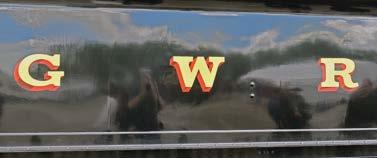
TONY STREETER
predecessor the Midland Railway; this is
TONY STREETER
TONY STREETER
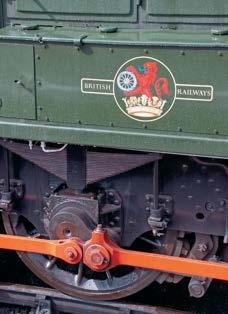
and be replaced by a new single road transport and brought both positives and
its rolling stock modernisation
subsequently revealed plans such that would dispense with services this did not mean that the LMA and its successors would always deal with the same structure: as an
1945
glamorous streamlined trains and new locomotive designs – the instantly brought this era to an companies were steered by a would not be
with the new organisation once it was
private railways and this new nationalised body was that the had pursued purely commercial by political and industrial
with that organisation would would be regular and detailed concerns were
That would become especially
was to act in a competitive had been able to establish way would not build rolling stock association has had to evolve and
would be much more to come…
Splitting track and train Rail Privatisation – Attractive Investment or Wishful Thinking?
report produced by consultants
the UK had not nationalised its
will take place under a new nationalised
1947
becoming more important due to their lower operating costs and relative cleanliness in comparison with
The nationalised railway went through various
lineage back to shunters
TONY STREETER

Perhaps the best making a comeback
TONY STREETER
once again chose not to stand and worked with campaign than that which was being proposed by

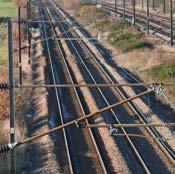
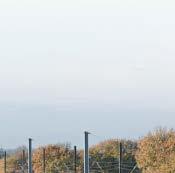
stock was allowed to operations were privatised and to private steep decline in the period responded by redoubling its international

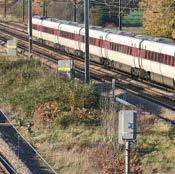

shown that privatisation proved risk – while Railtrack turned out came under increasing pressure and was put into administration administration had been



government body that had

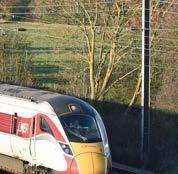

Privatisation has endured in
government involvement
passenger numbers
A new publicera
became publicly railway operation towards the reliability back into the railways delays and the Williams-Shapps Plan for Rail
– as well as limbo in the period a Rail Innovation Strategy that transparency in communication would engage openly with stability was highlighted as engagement in maintaining during this transitional
the plan aligned with many Rail 2050 long-term strategic approach to smooth out boom-and-bust
– the Locomotive Manufacturers’ Association Handbook
1951
A picture that encompasses the ongoing reorganisation introduced onto the was taken in-house operator was London – almost the same as that owned and worked
TONY STREETER
20th Century German competition
Cooperate, or compete?
Cost or quality? They are perennial questions that the country being the birthplace

1875 to 2025: from the LMA to RIA
TONY STREETER
strict government regulations
the main competitors in
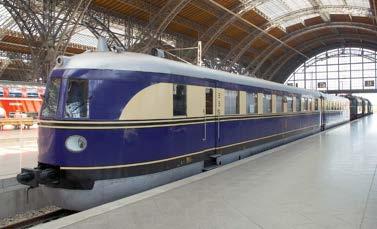
serious crisis in its
necessary to meet German competition in the open
The problems became German 1956
Mallard. TONY STREETER

Raising standards around the world
Compatibility, standardisation, standards.
Words that guide any industry. But aspects that are by outside forces. Today, many standards are established – and enforced – by international and governmental bodies.
1875 to 2025: from the LMA to RIA
1957
LAMA not only has a new name and structure, but now a new home too: it moves into the just-completed Locomotive House, in London’s Buckingham Gate. Not all the challenges are new, however: the spectre of foreign competition in the home market is looming once again, this time due to the possibility that the UK
Trade bodies such as the Railway Industry Association must actively engage with them to ensure workable rules
will join a Free Trade Area with what is becoming known as the European ‘Common Market’. The prospect is that UK.
LAMA coordinates its stance with both the Railway Carriage & Wagon Building Association, and trade unions, against what it sees as a major threat. For now though, that threat recedes.

that support industry; RIA has done precisely that for decades – helping shape the postBrexit regulatory landscape, just as it previously helped determine that of the European Union’s single market.
Yet standardisation is hardly a new topic. Go right back to the 1840s, and resolution of the UK’s ‘gauge wars’ was an early example of government-imposed standards; Brunel’s broad gauge lost out and parliament mandated that future railways be built to what now became
known as ‘standard gauge’
RIA’s predecessor, the Locomotive Manufacturers’ Association, was an early player in developing common manufacturing processes and designs. By promoting industrywide standards, the LMA ensured that UK-built products were recognised for reliability and quality; implementing best practices also helped reduce costs and improve
When it came to standardisation of locomotive designs themselves
though, a major impetus came from outside. In 1901, the UK
Indian railways to buy locomotives from Germany at least partly on a lack of standardisation
An early step in response was when members took part in a meeting of the new Engineering
to discuss forming a subgroup on locomotive standardisation. In the case of India, the subcommittee was supported by not only the engineers, plus others from Indian railway companies. Meanwhile, the LMA increased member contributions to cover the cost of components needed to introduce standardised designs.
This was an early case of successful industry-wide agreement on standardisation… and exports grew.
time: in 1918 the LMA released the report Standardisation of Locomotives for Great Britain; during the following decade it was involved in introducing standard designs to China. In the 1920s too, a new range of Indian locomotives
Standardised… contracts
In recent decades, into standardisation at a European level. In 2010, a Deutsche Bahn when the German operator announced its plans to serve London via the Channel Tunnel. While that has not yet happened, existing international operator Eurostar now uses similar units.
TONY STREETER
1960
work, and a high-quality paper publication that does the same thing. This forms the groundwork for what will later become a regular association magazine: Railpower. Information.
1961
Processes, components and locomotives are not the only things to have been standardised over time. By the 1920s, the LMA noted that standard clauses were increasingly the norm in contracts with governmental establishments. These clauses included provisions on independent arbitration, delivery delays and liability for accidents.
the industry’s public image. He has plenty to address. New BR chairman Richard Beeching announces that the demand for new locomotives will decline. & Hawthorns ceases its operations.
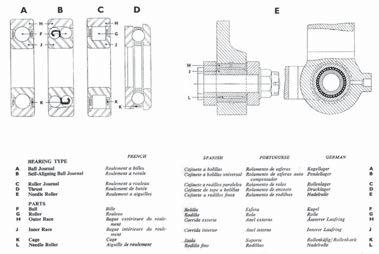

further than just designs for locomotives themselves. In the 1940s, the LMA Handbook a multilingual guide to aspects such as tolerances for components, to ensure commonality. LMA/RIA
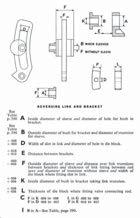

was introduced under the aegis of the association drew together a list of standardised steam locomotive parts for colonialrailways.
These processes did not only take place in respect of exports.
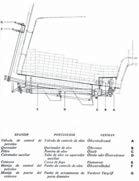

With the nationalisation of both the UK’s main line railways and colliery systems in the late 1940s, the LMA played a role in the development of standardised locomotives for both the new British Railways and, in particular,
was now the Locomotive & Allied Manufacturers’ Association participated in discussions on diesel locomotive standardisation in Western Europe. At home, a joint British Transport Commission/LAMA Technical Collaboration Committee ensured that members’ voices were heard as BR worked through its modernisationprogramme.
In the decades thereafter, activities increasingly focused once again on international opportunities. Then, as 1992 approached, RIA engaged closely with the forthcoming European single market. Issues such as compliance with regulations, harmonisation of standards, and fostering relations with other national trade associations were seen as critical to secure RIA members’ success in the new landscape. RIA also urged the creation of ‘European demand from both domestic and overseascustomers.
By the next decade, the focus had shifted slightly once again – to EU directives such as that on interoperability of rail systems, which emphasised the harmonisation of European
RIA has been engaged in establishing the post-Brexit regulatorylandscape.
1962
The giant North British Locomotive Company ceases operations. It is a symbolic moment, as its three
Its goodwill is acquired by AndrewBarclay. Remaining members deal with a new challenge – metrication. LAMA helps smooth the
the focus had turned to more modern forms of traction. What
Yet while the circumstances may have changed over time, the principles remain the same as they were a century or more ago – with RIA playing a key role in standards and standardisation on behalf of its members, just as the LMA did in 1901 or 1918.
changeover, liaising between bodies such as the members.
There is further railway reorganisation when another Transport Act dissolves the British Transport Commission, creating separate boards for its individual elements including BR. Under the new act, the Minister of Transport can direct the nationalised industry to stop certain manufacturingactivities.
Standardisation for war – and industry
While standardisation can bring curse.
That was the situation facing Locomotive Manufacturers’ Association member Hunslet in the late 1940s, as the recently-established National Coal Board sought a standard shunter to replace the multiple designs of steam locomotives ordered by its independent predecessors.
It focused in particular on Hunslet’s ‘Austerity’, a rugged, simple machine that had been built for the War Department
been delivered to the Army as its standard steam shunting locomotive;
some construction had even been subcontracted by Hunslet to other builders, to keep up with demand.
The problem for Hunslet was that the NCB wanted access to the ‘Austerity’ drawings – which potentially risked the Leeds company’s future income. Indeed the LMA even looked at whether drawings could be copyrighted, but came to the
Instead, the LMA brokered a deal in which all members would be permitted to build ‘Austerity’ locomotives, but the blueprints themselves would not be supplied to the NCB. In return, Hunslet would be paid compensation.
As a result, the ‘Austerity’ continued in had been built by various manufacturers.
new, as well as acquiring former Army machines. The last locomotives continued to work in industry into the 1980s and –
Aside from purchasing steam locomotives, the NCB also showed an increasing interest in diesel shunters, of Hunslet, as well as fellow LMA
Builders Committee to address the growing role of industrial locomotive production. This group included principals from both Andrew Barclay and Hunslet, Clarke and Co.; Yorkshire Engine Co.;

1963
Beeching’s warning that the demand for new locomotives will fall takes concrete form with the publication of The Reshaping of British Railways – the ‘Beeching Report’. Railways and stations will go, as will around one-third of all passenger services, and strict expenditure limits are put in place. It is followed by news that orders for new locomotives will end by 1966. LAMA argues with the Board of Trade for special assistance for the industry. Another step in the association’s publicity magazine Railpower.
TONY STREETER
A permanent home?
In its early years, the Locomotive Manufacturers’ Association met in a number of places, having own.
preparation, when Locomotive Gate in Westminster. Despite the commemoration plaque showing by the LMA, by the time of opening construction amongmembers.
occupying a corner plot onto cinema.
In the event though, the what was by now the Railway corner to CatherinePlace.
Many of the association’s more recent years have been
in the heart of the capital. An economic value of the UK to RIA’s lobbying narrative on the sector’s importance to national growth.

heart of ANNABEL PARKER/RIA
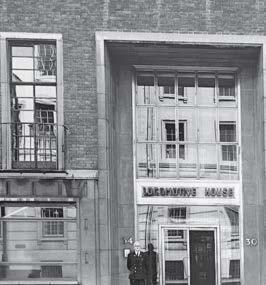






















Paying for it with ‘Phenix’





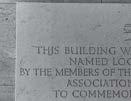

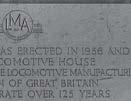



of course, it champions the
In the Locomotive Manufacturers’ Association’s case, it was for many years
the association late. After an internal investigation, subscription arrangements on an annual basis.

When LMA founder member the Avonside Engine Company faced liquidation in 1934, the association considered acquiring its goodwill. Although it did not progress such ideas at that exporter. Built in 1899 for a mining railway in Tasmania, J. P. Lonergan (Avonside Works No. 1393) ran until 1963. Pictures such as this, with locomotives painted a special ‘photographic grey’, were an important publicity tool for manufacturers into the 20th Century. AVONSIDE ENGINE COMPANY/ PUBLIC DOMAIN (ETH LIBRARY ZURICH, IMAGE ARCHIVE / ANS_05373-0629)




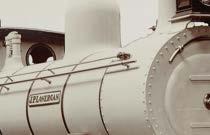







A store of ‘goodwill’ of ‘goodwill’
934. A time of political and economic turbulence, following the stock market crash of 1929 and the depression thatfollowed.
Like many others, locomotive times tough. Not all wouldsurvive.
This raised big questions for the trade body that existed to promote their interests. What to do when one or more of themfail?
That question became real in 1934, with the liquidation of the Avonside Engine Company. Originating nearly
a century before in 1837, Avonside was one of the LMA’s founder members in1875.
Based in Bristol, Avonside had built locomotives for home and export, and for main line and industrial companies. Now though, it was



1875 to 2025: from the LMA to RIA
1964
If 1963 brought mainly bad news, in 1964 the pendulum has already swung the other way: a proposed major project to electrify the West Coast Main Line between and will go ahead. What’s more, BR’s modernisation programme will demand the construction of a further
430 locomotives – around 14% of the total 3,079 that have been required across the wholescheme.
While the domestic market might be uncertain, members secure major export deals in this period. They include orders for Australia, Ceylon, India, Pakistan andRhodesia.
Contracts are not only limited to locomotives: English Electric delivers generators for Argentina, while it and
The Locomotive Manufacturers’ Association was faced with a decision on whether it should intervene. So at the request of the association, Hunslet was asked to explore a takeover of Avonside’s Works, which had been advertised in technical journals.
Hunslet’s recommendation was that the LMA should itself acquire Avonside’s goodwill, and then do one of two things. It could either bidder, or come to an arrangement with a member to operate it, over an agreed timespan.
In this case though, the members decided not to take such an interventionist course. The LMA stood aside, and the liquidators were informed.
However, Avonside’s closure would not be the only change in the 1930s; this was a period of consolidation at a time of falling would not be long before the LMA once again faced similar decisions.
Armstrong Whitworth was one of the ‘newcomers’ to locomotive
its activities from armaments. However, by January 1937 it had decided to concentrate on that core business once again. This meant that both its goodwill, and indeed its Scotswood Works in Newcastle upon Tyne, were available.
This time, the LMA decided to proceed. It agreed to buy the ‘goodwill of the business of manufacturing, selling, and dealing in steam locomotives, locomotive boilers, and spares or parts (including drawings, patterns, and blocks) of Sir W.G. Armstrong Whitworth (Engineers) Ltd and all companies in the Armstrong Group.’
However, the £125,000 deal did not mean locomotive building continued at Scotswood Works: rather it involved its complete cessation (including the building of boilers and spares), in perpetuity. Throughout the
process, the membership successfully navigated
For example, the purchase required the creation of a limited liability company – so the LMA set up the Locomotive Manufacturers’ Company Ltd.
More followed. In December, the LMA bought the locomotive business of another founder member, Nasmyth Wilson & Company. The £70,000 deal included covenants against future locomotive manufacture at the Patricroft Works in Salford; with the LMA now Nasmyth Wilson’s landlords, it then leased the land back to the company for the remainder of the leasehold term. The following year it was the turn of Kitson & Company, yet another storied name in UK railway engineering. This time the LMA bought the goodwill for £45,000.
was now applied to all such operations acquired by the LMA.

Although the LMA ensured that Armstrong Whitworth did not build any locomotives after 1937, some of that company’s products remain active today. Constructed at Scotswood Works for the London, Midland & Scottish Railway
No. 45407 operated until BR eliminated steam in 1968. It now hauls charter trains.
TONY STREETER
Associated Electrical Industries both provide prototypes for Calcutta’s tramways. Already a key supplier to London Transport, the Metropolitan-Cammell Carriage & Wagon Company secures contracts for urban transit networks in Brazil and India, plus systems in South Africa. However, another famous company ceases trading this year: Sentinel of Shrewsbury.
1965
The Ministry of Technology is created, and will become the railway industry’s sponsoring department from 1966. BR’s adoption of diesel locomotives to replace steam has reportedly saved £10m in a year – LAMA sees this as a testament to reliability, innovation and close technical coooperation with private manufacturers.



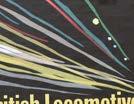

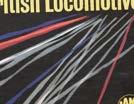


Campaigns, consultations, connections…
Activities such as the ‘rationalisation’
were
created to undertake legal action in members’ interests, the Locomotive Manufacturers’ Association was now becoming much more interventionist in various areas. It was a foretaste of the evolution that eventually led to today’s Railway Industry Association, a powerful trade body involved in international and domestic advocacy, training, andcoordination.
Even as early as 1909, the LMA had petitioned Parliament against
1965
A new name appears that will become wider UK economy and the association: the Confederation of BritishIndustry. It is formed by merging the British Employers Federation, the National Association of British Manufacturers, and the Federation of British Industries – of which LAMA is amember.










a proposed Bill that merged the Great Northern, Great Central and Great Eastern railways. In a sense, that was a precursor to the later creation (by government) of the London & North Eastern Railway, into which all three companies were folded in1923.
The LMA’s objection was on familiar grounds: the combined railway would have been able to manufacture locomotives across its breadth. Although against this were not considered likely to succeed, in fact they prolonged the debate to the extent that the Bill did not continue. This process also strengthened the association, which henceforth had a right to bring its objections forward toParliament.
In subsequent decades, the evolving association has played a consistent role in advising, involving and lobbying governments andParliament.
During the Second World War, it supported the Board of Trade with identifying the requirements for postwarreconstruction.
In the years afterwards it worked alongside the United Kingdom
Railway Advisory Service, which was established in 1959 to provide technical and operational guidance to British Railways and the broader rail industry. It also actively supported the creation of the Confederation of British Industry in bringing commercial considerations together with that oflabour.
In the 1970s, RIA was instrumental in the establishment of the campaigning group Transport 2000, which fought against possible line closures and advocated a national transportstrategy.
In the 1980s, it collaborated with BR to produce technical
behind the creation of the British Railway Industry Group which brought together government departments, BR, London Transport, and RIAmembers.
More recently, in 2014, RIA was pivotal in establishing the Rail Supply Group, once again bringing government and industry leaderstogether.
RIA takes part in parliamentary committees, responds to consultations, and produces
such as the Value Improvement Programme and the Ten-Year Plan, both of which appeared in2000.
It has consistently supported training, not just with its own courses but actions such as it being the lead promoter for the National Skills Academy for Railway Engineering (NSARE); RIA proudly announced that the government had approved NSARE in April2010.
As an ‘industrial associate’, LAMA’s role within the new organisation is limited, although it has representation on the Council for relevant matters. Nevertheless, the association strongly supports the CBI’s creation, bringing together as it does commercial and labour aspects within a singleorganisation. Retrenchment continues within the industry when another LMA founding member decides to cease building locomotives. This time it is the Yorkshire EngineCompany.
Futuristic design and information about what LAMA members
both part of British Locomotives, produced as a publicity tool at the end of the 1950s. LAMA/RIA

RIA was active in the committees and groups developing a pan-European network and standards – right from the earliest days of Britain’s membership of what developed into the EuropeanUnion.
Since the UK’s decision to leave the EU in 2016, RIA has been similarly engaged world. It has worked closely with government departments including the Department for Transport, the Department for Business, Energy & Industrial Strategy, and the Department for International Trade, to ensure inclusion of the rail supply sector’s priorities in ongoing discussions during the UK’s transition out of theEU.
1967

As well as such activities to actively promote members’ interests, RIA has been diligent in another of its priorities –keeping them informed. In the case of Brexit, it not only published two positioning papers after the referendum, but introduced a dedicated weekly email, and launched an online discussioncommunity.
Even more recently, RIA has been active in seeking to new Great British Railways –something it continues todo.
All these activities – and many others that RIA engages in – follow directly in a tradition of engagement that goes back to the days of theLMA.
The Channel Tunnel will not in the event come to fruition for decades yet… but even so, LAMA is concerned about the extent of French The association seeks assurances from the government expected to be brought about by theproject.
1968
They are also fully in line with a in 2018: to ‘connect, lobby, represent, facilitate, promote, support and improve’.
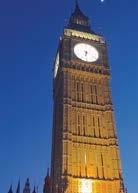
Building on the success of British Locomotives, LAMA introduced the industry magazine Railpower in 1963. In 1975 the magazine marked the association’s centenary, while in 1977 it celebrated both the Silver Jubilee of Queen Elizabeth II, and a major export order won by British Rail Engineering Ltd for Kenya. RIA
For more than a century, the association has played a consistent role in advising and lobbying Parliament.

TONY STREETER
TONY STREETER

a key wartime role
If the 1930s were a time of shortage of orders and retrenchment, the Second World War once again brought a heavy reliance on the UK’s
industrial capacity in the cause of national survival. As key components of that capability, members of the Locomotive Manufacturers’ Association would

1875 to 2025: from the LMA to RIA
1968
For nearly a century, LAMA and the LMA have been able to maintain the principle that railways could only themselves build locomotives for their own use. brought the organisation into existence in1875. overturning the work of those early pioneers such as Sacré and Hutchings. The trigger is yet another

not only build locomotives but help areas.
One crucial way in which they contributed was in sustaining the


Transport Act; henceforth, BR will be able to build locomotives for external customers as well asitself. LAMA is vigorous in its campaign in response – and does not come away empty-handed. Under the new rules, BR is required to circulate manufacturing proposals to both the CBI and Trades Union Congress, and operate its workshops as if they were commercial organisations. A result of this is that the nationalised railway will form a subsidiary: British Rail Engineering Ltd, known asBREL.
UK’s rail network, which was vital for the movement of equipment, troops and raw materials. Huge pressure was placed on existing need for both new engines to be constructed, and existing ones to be repaired andmaintained.
A further key contribution was in supplying locomotives to maintain in allied countries and (in the

liberating armies moved forward into territories that had formerly been occupied. Locomotives were shipped to North Africa, the Middle East, India andEurope.
While such wartime orders were welcome after a decade of uncertainty, the focus quickly shifted to how much production capacity was available. Discussions were though conducted on the assumption that supplies of iron and steel would be forthcoming,


1969
Despite wider uncertainties, members still have much to celebrate. For example MetropolitanCammell, AEI Traction, Brush Electrical Engineering, and Westinghouse Brake & Signal Company have all contributed to the creation of London Transport’s
and that members could retain their workforce at currentlevels.
Despite various shortages, the boost locomotive production – was able to increase output. Streamlined processes were adopted, new techniques developed and substitute materials used where necessary. Coordination by the association helped ensure that whatever resources were available were used in the bestway.


An early issue for the LMA to resolve was how its members
an order from the Ministry of Supply for ‘8F’ locomotives, after the 1930s goods engine design was selected for Army use. Although a product of the LMS, this was then produced in the workshops of various companies. The design was also
sensitive order for Turkey; despite its War Department livery, this locomotive is actually one of those sold to the Middle Eastern country. It was later repatriated to the UK, but others have remained overseas.
TONY STREETER
automatic. Ultimately, the Victoria Line will run from Walthamstow Central to Brixton, via central London.

The Second World War saw the birth of Hunslet’s ‘Austerity’, a shunter for the British Army that subsequently also became a standard locomotive for the National Coal Board particular locomotive, No. 22, was built directly for the NCB in 1956.
TONY STREETER
In December 1939, the LMA’s four largest members held a special meeting to discuss an initial Ministry of Supply order for 240 ‘8F’ locomotives, which were to be built at a rate of 20 per month starting in May 1940. This agreed rate of delivery was lower than the government had initially wanted, enabling members to continue to build locomotives for export toTurkey.
The North British Locomotive Company and Beyer, Peacock agreed to construct 100 locomotives each, with Vulcan Foundry taking on the remaining40.


Inevitably, conventional exports
contract with Turkish State Railways needed intervention by the Ministry of Supply to ensure it could be completed. Orders for Spain wereshelved.
In addition to motive power for UK domestic and British Army use though, members were tasked with building locomotives for the country’s allies. For example, the UK government’s support for the Soviet Union facilitated the supply of military and industrial apparatus, and this included
locomotives; contributions by Vulcan Foundry and North British proved vital to Soviet logistics on the Eastern Front, as part of
meet the USSR’s wartimeneeds.
Nor was the contribution by members during the Second World War limited to locomotives. With their expertise in heavy engineering and precision manufacturing, the UK’s locomotive builders were well placed to diversify their activities to produce military equipment. In a practical sense this helped meet the immediate wartime needs
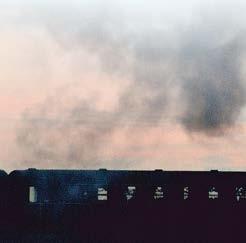

1970
The potential tension between nationalised and private industry becomes clear when British Rail Engineering Ltd, which comes into being in January, secures both a contract for containers and another to export bogie wagons to Malaysia. It is a major newcompetitor.



Despite caution by members, LAMA begins discussions with BREL about potentialmembership. That is just one way in which the association continues to
supply chain rather than just locomotive manufacturers, LAMA decides to rebrand once again. It will become the Railway Industry Association. See page54.

– but it also demonstrated the adaptability and resourcefulness of the engineeringsector.
LMA membership was by this point smaller than it had been, being limited to Beyer, Peacock, Andrew Barclay & Sons, W. G. Bagnall, Hunslet, North British, the Vulcan Foundry, and Robert Stephenson & Hawthorns.
In April 1940, these companies met to discuss the government’s creation of an Export Council. As part of that process the LMA formed a Locomotive Industry Export Group, which
also included non-members, builders of diesel locomotives, and companies supplying parts to the industry. In a sense, the creation of that grouping was a precursor of the direction in which the LMA would take its activities in the years after the
A key contact for the LMA was the Director of Transport and Equipment at the Ministry of Supply. Robert Riddles had worked for the London & North Western Railway before it became part of the London, Midland & Scottish Railway in 1923, and
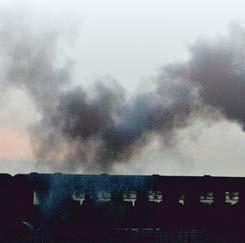

Wartime assistance
Aside from its planning and coordination roles, the LMA’s wartime assistance was felt in other ways too. For example, after the North British Locomotive accommodation.
An unusual reminder of how war is a series of personal stories came in the summer of 1941. That’s when the LMA received a letter from Dr von Klemperer, the former chairman of the equivalent German association – asking whether any member could use his services. Perhaps unsurprisingly, the LMA considered it impractical to employ him… but it was left to individual members to consider his application.
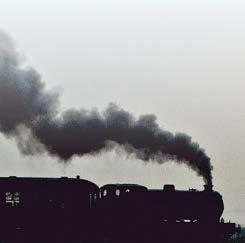

1971
Railpower proclaims the change from LAMA to RIA – an organisation that will operate more broadly than its predecessors, on all aspects of both the supply chain andoperation.
RIA’s focus on exports too brings an early innovation: supported by the government’s Department for Trade & Industry, it organises an exhibition in Moscow to market.

1972


Collaboration between RIA and London Transport brings opportunities for members beyond merely supplying the Underground; London Transport is active in consultancy outside the UK, providing connections to urban rapid transit in other countries.
Foundry and North British, while the latter also built 150 examples of a 2-10-0 version. These had extra wheels to provide a lower axle loading for lighter-weightlines. While a number of both versions ran in the UK after the war, others remained overseas. One user was the Netherlands, which has 2-10-0 No. 73755 Longmoor on display at Utrecht. This was the 1,000th UK-built locomotive to be shipped to the continent following the D-Day landings, in its case in May 1945.


ABOVE: Many UKbuilt war locomotives remained overseas in the reconstruction of railway networks. They included No. 5009 (formerly WD No. Utrecht, Netherlands, shortly after the war.
NEDERLANDSE
SPOORWEGEN/THE UTRECHT ARCHIVES/ PUBLIC DOMAIN
RIGHT: There’s no doubt which member built this locomotive… delivered to the Ministry of Supply in 1943 and shipped to the Middle East, this 2-10-0 was declared surplus in 1945 and transferred to Greece. It was repatriated to the UK in 1984 and is now resident at the North Norfolk Railway as No. 90775.
TONY STREETER
1973
would go on to lead the process of creating a standard range of locomotives for BritishRailways.
By summer 1941, the war’s
steel for exports prompted the association to make representations to several government departments.
visited a number of members’ facilities; the aim was to reduce export work if that was deemed
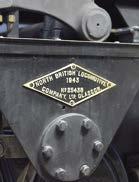
In future years the Campaign for Better Transport will become a key advocacy group – its origins are however
to support railways and to urge the creation of a national transport policy, Transport 2000 is backed by RIA as well

to be in the national interest.
that the locomotive industry was doing all it could – and that no changes wereneeded.
Further contributions to the
the association’s ownership
At the Ministry of Supply’s request, the association agreed to waive the covenanted restrictions on Airedale Foundry to allow locomotive work to take placethere.
Over this period, the LMA had become heavily involved in wartime coordination in a number of ways, and this led to the association being asked to contribute expertise through the Federation of British Industries
Advisory Committee, on which the FBI was represented, had been established to support the government’s production drive. In turn, the FBI appointed a group to advise representatives on the committee, and the LMA was invited to takepart.
While winning the war was naturally the most immediate priority, in 1943 the association established a new policy committee as it started to plan in earnest for the postwar period. Towards the end of that year, the association’s involvements in numerous organisations, and its interactions with various government departments and bodies, were greater than at any point since its inception. During this period the LMA was assisting the Railway Engineering Supply Industries Joint Committee, the Locomotive Industries Export Group, and the FBI. In addition, the association helped the Board of Trade to prepare a statement on the requirements for postwar reconstruction. All this came while the LMA also ran its various internalcommittees.
During the latter years of the war, planning was undertaken jointly with the United States. Despite this,
as other organisations such as the National Union of Railwaymen. Within the association, further evolution comes with the move of RIA from Locomotive House, its home since Westminster.
A key change in the wider market is that, together with Ireland, the UK joins the European EconomicCommunity.
Riddles allowed the LMA to decide how to distribute locomotive production among itsmembers.
Further recognition for the association came in late 1944, when it was announced that Secretary John Vaughan (see the Order of the British Empire for hisachievements.
Despite delays to the 1945 war-building programme, good news arrived for North British, which secured an order for 110 ‘XD’ light goods locomotives for India, while Vulcan Foundry



Promotion for the future
Despite the disruption caused by the Second World War, the association was still keen to pursue projects that promoted its members’ wares and activities. One of them was the LMA Handbook, which would contain the history of the association, plus
received an order for 35 ‘XE’ heavy goods versions. The association prepared a list for the Ministry of Supply, detailing the operational position of each member’s Works, to aid planning for what would

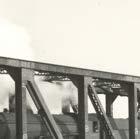


1975
German locomotives. This was part of a broader strategy to expand the association’s activities once the war was over.
Once more, the LMA had proved itself to be adaptable and the master of circumstances. Sitting as it did at the heart of a crucial industry, it had again proved its worth,

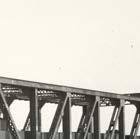
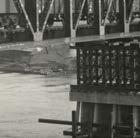

RIA’s centenary year is a busy one. It is actively involved in the creation of the Union of European Railway Industry
Economic Community and other emerging pan-European institutions. Separately, RIA leads the British Railway Industry
2-8-0, running over a temporary bridge across the River Meuse in 1946. THE UTRECHT ARCHIVES/PUBLIC DOMAIN





Saudi Arabia, and Venezuela. Ties are also maintained with the Economic and Social Commission for Asia and the The longest-standing member during this anniversary year is Hunslet, which joined in 1876. Meanwhile, GEC Diesels operates from the site of Vulcan Foundry, a founder member.
History through RIA’s eyes…
The Railway Industry Association has always prioritised communication with its members, and for many years that included publication of its own magazine Railpower Introduced by RIA’s predecessor
the Locomotive & Allied Manufacturers’ Association in 1963, Railpower by the RIA Update in2003.
Speed and new rolling stock was a big focus for
Railpower in the 1970s, a decade that saw the launch of both BR’s extremely successful High Speed Train and its Advanced Passenger Train… which was widely deemed a failure.


RIGHT: Built from 1975 onwards and rolled out across the network, the HST – or ‘InterCity125’ – remains in service today. In 1973, Railpower trumpeted the HST prototype’s ‘world speed record for diesel traction’ – 229km/h, or 142mph. A production set later reached over 148mph, which remains a recordtoday.
BELOW: In 1979, Railpower reported on the start of testing with pre-production electrically-powered APT vehicles, ahead of what seemed like an exciting period. Although the tilting APT ultimately saw little service on its intended London – Glasgow route, tilt was later successfully brought to the West Coast Main Line with the introduction of Virgin Pendolinos in2002. In hindsight, the bigger news was perhaps that Kenya had placed a £24m contract with RIA member BREL.



ABOVE: For June 1972, Railpower decided to feature the Advanced Passenger Train – Experimental on its cover. The gas-turbine powered prototype was used for testing between that year and 1976. However, although the APT-E was the chosen image, the real news was that RIA was busy promoting exports at the ‘Transpo 72’ exhibition in Washington.


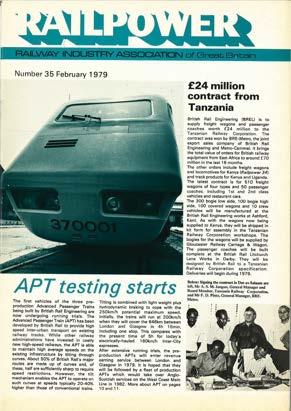






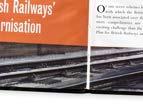
1875 to 2025: from the LMA to RIA


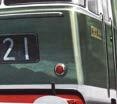











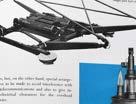





British Locomotives.
LAMA/RIA
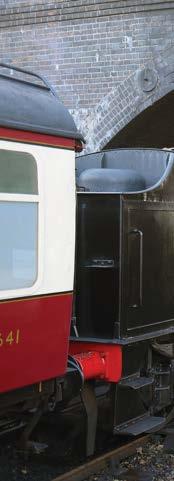
TONY STREETER
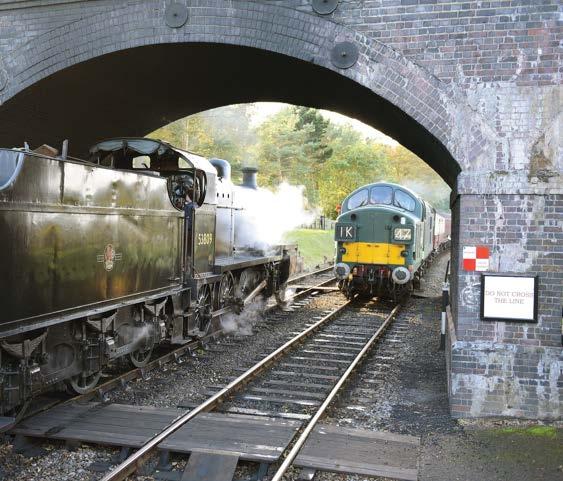
Railpower
laissez faire


TONY STREETER
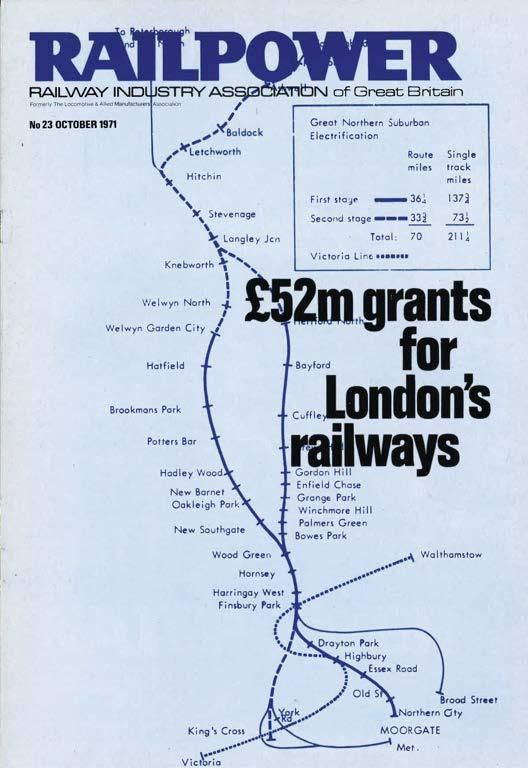
Wires, wires, wires…




LEFT: BR’s domestic investment was on show in the October 1971 Railpower, with news that Great Northern commuter lines from London would receivewires…
RIGHT: …while in 1975, the General Electric Company’s winning of a contract to electrify 1,150 track kilometres (715 track miles) in Taiwan made the front page. At this point in the association’s centenary year, the magazine combined bold colours with
device celebrating the 150th anniversary of the Stockton & DarlingtonRailway.
ABOVE:
north from London again. This time it was the ‘BedPan’ line… Bedford to St Pancras. BR Chairman Peter Parker said the scheme ‘provides continuity for the teams of skilled and provides a continuing shop window for customers from overseas railways.’
In the 1970s, much of the debate around railway investment was later. With its expansion and change from the Locomotive & Allied Manufacturers’ Association into the Railway Industry Association, the group now included track and other industry suppliers. So it was natural for Railpower to welcome opportunities for other members.






Supporting the whole supply chain – RIA arrives
If the conversion of the
remit, its next transition would prove even more of component manufacturers as well as companies that built it would reposition itself to further evolution – but that
to a further transformation and gave the association the identity it has built on to this
The possibility of expanding a joint working party and in June would in future become the
change over previous plans, which had envisaged a full
evolving focus came with one securing government support for research and development
railways and rapid transit systems both established themselves as core areas of
had established Passenger Transport Executives for the Tyneside, and Greater Glasgow
sought assurances that research and development funding would remain within the UK industry, to avoid a risk of to overseas
advance new urban transit was of prototype light rapid transit cars for the Tyne & Wear
innovative contributions of members to emerging
between members – became a progress during this
relationship with London Transport
a programme of modernisation and network expansion, including partnership extended beyond overseas consultancy activities members to contribute to international rapid transit
The association championed countering government opposition for members producing rolling supported the Heathrow Extension programme, which
itself with the British Electrical and
Global investment in rail public transport systems was surging, and Railpower argued that the UK on this trend, showcasing the
1875 to 2025: from the LMA to RIA
2001
European interoperability becomes a central focus, following the publishing of a new EU Directive emphasising the harmonisation of European Standards
Vision 2010 – a roadmap to grow and modernise European railways over the next decade
dialogue with the British
– and is involved in the implementation of European Domestically, the association plays a key role also chairs the Skills Shortage Steering
Designed by Brush and undertook trials on
Line before entering passenger service on
Line, which was then in the process of being
was later used by
in this view at Barrow Hill is an earlier version was built for use on the and incorporated electrical equipment
TONY STREETER
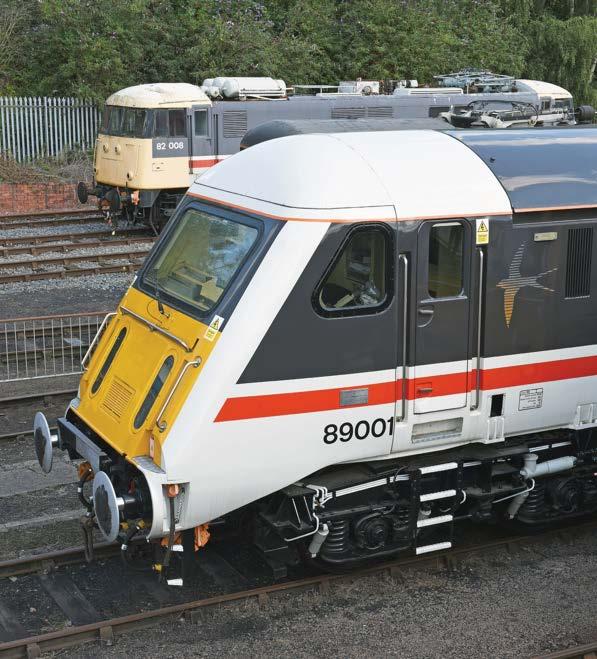
2004
documents that shape the framework for Strategic Plan and franchising
Railpower has had its RIA Update, published of industry updates and export
emphasises its commitment to changing its organisational structure, while also outlining a strategy to achieve



Regular policy liaison and joint technical initiatives, such as an demonstrated a shift away from the adversarial positions of earlier
and commitment to innovation, positioned the association as
the support of the British Embassy and Deutsche
based railway manufacturers at home and
investment in the railway industry
government plans to order

2005
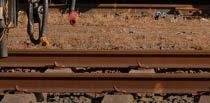
with a projected investment encouraged close coordination with the BRB to ensure that plan manpower, workloads, and material centred on collaboration in
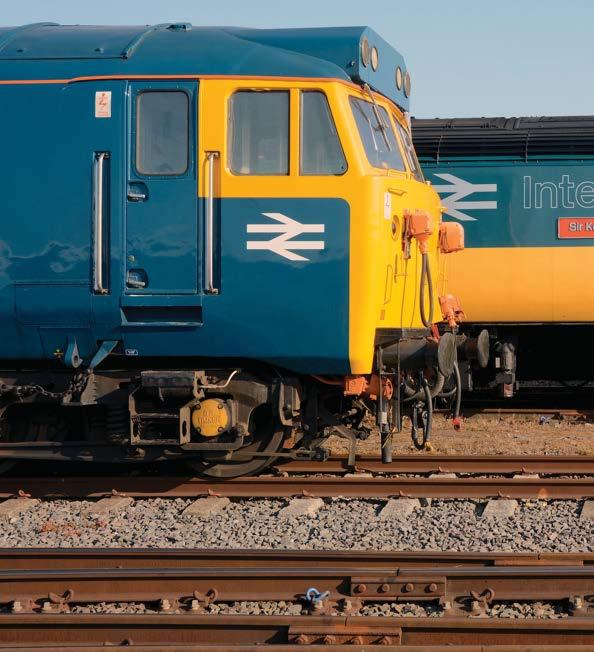
redundancies are taking place among suppliers as of Rail Regulation, and the Department for Transport, as Business Survey reveals widespread uncertainty as

Technological development was a

Held at the University of Nottingham and supported by BRB and the British lectures was published, serving as a compendium of contemporary traction and rolling stock
Government support ensured participation from overseas students,
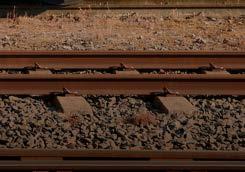

closely with BR to produce technical These documents guided practices for railway applications, including topics and vibration testing for vehicle


when the Department for Transport recognises the demand and major infrastructure
Royal
Sir Kenneth Grange
TONY STREETER
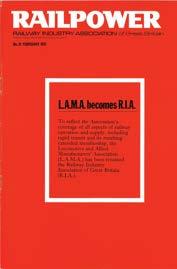







research and development, and raised the need for a
argued that this was essential for the commissioning of complex rolling stock before export – a measure that would protect the global reputation of UK came from Pandrol Ltd, a company specialising in resilient celebrated the production of quantity that, as Railpower noted, could circle the globe achievement won Pandrol the section, which was presented by HRH the Duke of
to increasingly engage with innovative technologies that would shape the future of such as the maglev lines at stemmed from meetings between government
and the association organises trade visits to the
Railpower RIA RIA
in coordinating initial proposals, further demonstrating the of collaboration between government and Docklands Light Railway, alongside the Department lobby for the project, which won by a UK consortium, domestic
during this period was the creation of the British Railway
This represented a renewed government departments, to address major issues
growing recognition of the value a BR presentation in York, Prime best products to visiting
brought about Western replacement programme, involving the construction of
An active focus on exports
Export markets were critical for new and developing on international collaboration and market trade missions, coordinating outward missions to key markets, and representing
participation at the European
assessed how best to leverage overseas projects that represented major opportunities for UK expertise and approach to win contracts and secure
Projects, as part of a consortium, power equipment, and signalling for supply passenger coaches and freight and Projects continued to grow its
track contract in partnership with Westinghouse Brake and Signal
Hawker Siddeley Group undertook the
another success, with Henry Boot
was the penetration of the competitive successes emphasised the global
assisting members to secure overseas contracts despite strong international opportunities existed, only a small number of negotiations typically came to fruition – a fact that underlined
gaps comes with the launch of the National Skills
The association also contributes to both Rolling Stock Route Utilisation Strategy and the Initial Industry Plan
Order.. and repeat
Exports have always been a focus for the association – right back to its debates about supplying India at the turn of the 19th and 20th centuries (see page 10). That’s true for the Railway Industry Association today too, and in the 1970s and 1980s its in-house magazine Railpower was able to trumpet successes around the world.
FAR RIGHT: There’s no missing this cover from February 1976, celebrating a repeat win by Brush for shunting locomotives. Africa was an important market for members, and the 20 diesel electrics for Nigeria were a follow-on from an order for 22 similar locomotives delivered in 1973/1974. The choice of green may make this cover eye-catching, but overlaying the story itself on a line diagram perhaps doesn’t make for the easiest reading…



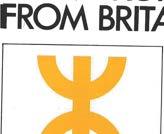











ABOVE: Extra, extra! A special Railpower in November 1976 splashed on major orders from the UK for the new metro in Hong Kong, at this point still a British territory. While the story is again on the front page, the layout is much more legible and newspaper-like than that of earlier in the year. Urban rail schemes were a growth area in the 1970s, and Railpower argued that ‘Britain’s success in Hong Kong promises well for thefuture’.
LEFT: By 1982 Railpower itself was very newspaper-like – but still had a key focus on exports. This time the front page celebrated two key successes, both for South America. The General Electric Company was the big winner in Brazil, with major contracts for a metro in the Atlantic city of Recife. British Steel would send rails to Colombia.















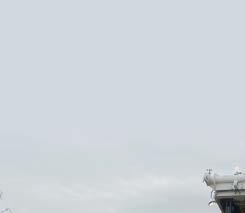






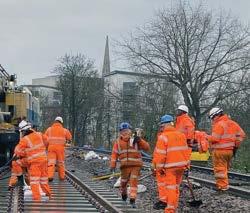
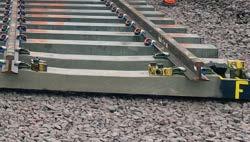

RIA: ten key achievements from 150 years
6. 7. 8. 9. 10.

NETWORK RAIL



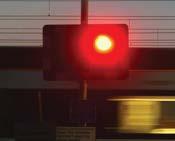






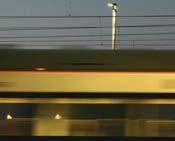
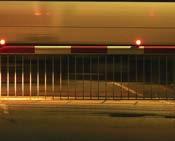



TONY STREETER












TONY STREETER
RIA
Congratulations to RIA from the industry on 150 years!
At BAM Nuttall, and previously Edmund Nuttall, our decades of experience in the rail sector have always been expertly supported by the Railway Industry Association. It’s incredible to think that RIA are celebrating 150 years of championing the needs of the industry; their energy and vigour continue to ensure that the skills, knowledge and needs of the sector are fully understood by the procuring organisations. Here’s to another 150 wonderful years of RIA!
MICHAEL ADAIR
Client Account Director Network Rail UK, BAM Nuttall Ltd
To be a leading voice that consistently advocates for the best interests of the industry, whether during peaceful or uncertain times over 150 years, is an incredible achievement. Huge congratulations to RIA on reaching such an historic milestone. We look forward to continuing to work together, making a railway industry everyone can be proud of.
KATY DOWDING
President and CEO Skanska UK
I have worked with the Railway Industry Association (RIA) in and have always found it to be a very focused and professional advocate for rail suppliers. The RIA
creating a wider understanding of the impact of short-term stop-go
funding decisions on a long-term industry. Please keep up the good years!
CHRIS GREEN OBE
Career railwayman, and former director InterCity and Chief Executive of Virgin Trains
For 150 years, the Railway Industry Association has championed the skilled hands and expert minds of Britain’s railways, driving innovation, technical excellence and an unwavering commitment to keeping our country connected. From small enterprises to major contractors, RIA members have propelled our railway from the steam age to the digital era. As we celebrate this milestone, we look forward to an enduring collaboration, powering the railway’s vital role in our future.
SIR ANDREW HAINES OBE Chief Executive, Network Rail
RIA has long been a vital champion for SMEs like Belvoir Rail, driving collaboration, innovation and growth across our industry. As a proud member, we celebrate RIA’s 150
just businesses, but the wider social and economic impact of rail. Here’s to a remarkable legacy and future.
MIKE HARMER Chief of Strategic Operations – Belvoir Rail
Congratulations to the RIA on reaching its 150th year – a testament to its commitment to collaboration
1875 to 2025: from the LMA to RIA
2022
As work begins to create the new Great British Railways, RIA publishes ‘Five Tests’ to guide the transition. These call for continuity of work, communication, a partnership approach, on safety, decarbonisation, exports, and economic progress. RIA also has a new magazine: The Railway Industry. This follows on from its predecessor RIA Update and, before that, Railpower.
and the long-term success of UK rail. These values resonate with Arup’s own mission to shape a better world through sustainable design and strategic partnerships. We’re proud to work alongside the RIA to help advance a more integrated, resilient, and future-ready rail network – we look forward to building further on this shared vision.
PHIL HARRISON
UK Rail Business Leader, Arup, and RIA Wales & Western Chair
For 150 years RIA has been the tirelessly to improve and maintain the UK’s railways. This country is the pioneer of services 200 years ago, to continuing to grow and develop our rail industry in a sustainable way, RIA has represented the experts and products at the forefront of this innovation and determination.
The members of RIA contribute £43 billion to economic growth a year and employ over 700,000 people – their contribution to not only the rail industry but the UK as a whole, cannot be underestimated.
I congratulate them on their 150th anniversary and wish them the best for their work over the next 150 years.
LORD PETER HENDY CBE Rail Minister
As we mark the RIA’s 150th anniversary and celebrate 200
2023
Digitalisation is a core theme of the moment, and RIA partners with Intelligent Transport Systems UK on a new initiative. The Digital Decade for Rail seeks to catalyse the transformation of the network over the next decade. Engagement with ministers allows RIA to advance members’ priorities and highlight concerns surrounding key areas, including rail decarbonisation, rolling stock strategy, and the hiatus in enhancements.
years of rail in the UK, we are reminded of the extraordinary legacy and enduring impact of this industry. Rail has not only connected communities
has inspired generations of engineers, innovators, and visionaries. At Aureos, we are proud to be part of this journey, delivering the infrastructure and engineering solutions that keep Britain moving. We salute RIA for its unwavering leadership and advocacy, and we look forward to continuing our shared mission of building a greener, smarter, and more resilient railway for the future.
DARREN JAMES
Congratulations to RIA for being such a powerful voice for the rail industry over the last centuryand-a-half. Thank you for your pursuit of engineering excellence, your advocacy of high-quality technical knowledge and for articulating what rail can do at its very best as a catalyst for quality jobs, new economic growth and social justice right across the UK.
SIMON JONES
Chief Executive, Global Centre of Rail Excellence
RIA is a great support to my business which is a small and medium sized consultant supporting the rail industry in the UK and beyond. The intelligence, leadership and political lobbying RIA provides helps to keep rail at the top of the government agenda and ensures that rail is a sustainable solution in every way.
CATHERINE LEECH
Managing Director, Anturas Consulting Ltd
and advocating for the railway industry. TfL’s supply chain reaches all four corners of the country, and we wouldn’t be able to move people around our capital city without the tireless work across our supply chain. Nearly a third of our supply chain activity and economic
RIA supports TfL to connect further with partners in the rail industry and I look forward to continuing our strong working relationship in the years to come.
ANDY LORD Commissioner for Transport for London
At Laing O’Rourke, we support our people and leverage their expertise, whilst also bringing forward technology and innovation to deliver transformational productivity and delivery gains. We congratulate the Railway Industry Association on their 150 years of championing the same values and we look forward to continued support.
PETER LYONS
Managing Director, Laing O’Rourke
RIA unites the railway industry by fostering collaboration and knowledge sharing among clients, train operators, suppliers, and stakeholders, all dedicated to delivering a safe, reliable,
customers and communities.
As a supplier we recognise RIA’s unwavering commitment to bring the industry together and build a prosperous future for UK rail.
CHARLES MORTIMER
Managing Director CML
2024 the policy that rail not be prioritised for the use of alternative measure.
Congratulations to RIA on 150 years of championing the rail industry. As members for over 50 years, Balfour Beatty has always valued how RIA brings the industry together – sharing insight, spreading best practice, and giving rail a strong voice. Here’s to the next chapter for RIA and the wider rail community.
MICK RAYNER
Managing Director of Balfour Beatty’s rail business
As the Railway Industry Association celebrates 150 years of progress, we’re proud to mark our own 160-year heritage of shaping the UK’s transport infrastructure. Together, we’ve championed innovation and have transformed the sector. Improving rail infrastructure is not just about connecting people and places, it’s about creating a sustainable future that drives economic prosperity and improves people’s lives, building much-needed resilience into the UK’s critical transportation system.
JONATHAN WILLCOCK
Managing Director of Transportation, Costain
Congratulations to RIA on 150 years of championing UK rail. Alstom is proud of our longstanding partnership –driving innovation, sustainability and excellence together. From pioneering technologies to delivering eco-friendly transport solutions, our collaboration has helped shape the future of rail. Here’s to continued progress and shared success in the decades to come.
ROB WHYTE
UK and Ireland Managing Director, Alstom
2025
RIA celebrates 150 years of promoting the railway industry. and developed in line with changing circumstances, for its members interests, just as it always has.
RIA’s voices for the nations and regions
Devolving power to regions is not new.
Barbara Castle was the kind of politician people like
Minister of Transport (1965-1968), national policies – introducing the permanent 70mph speed limit and breathalysers to the roads for example.
On the railways, while Castle continued the Beeching cuts that had started earlier in the decade, her 1968 Transport for railway lines that were considered socially necessary.
However, it was the launch of Passenger Transport Executives
engages closely with stakeholders to support members. RIA
impact. These bodies would take control of regional transport in selected urban areas away from Whitehall and give it to local politicians and authorities;

West Midlands, SELNEC (South East Lancashire & North East Cheshire), Merseyside, Tyneside, and Greater Glasgow.
It is a principle that we not only recognise today, but which has been greatly enhanced in the decades since, with a political landscape that has been transformed compared to that which Castle knew in the 1960s. Widespread devolution around the UK – in Scotland, London and Wales among others – gives nations and regions more of a say in their transport policies than ever.
That process is likely to continue, and indeed in June,
Chief Executive Darren Caplan
latest promised investment in regional transport, announced as part of the Spending Review. He said that moves to change funding rules and support local
both the rail network and railway suppliers who build, renew and enhance rail –whether track or train related – all around the country.”
devolution, and the association has a well-established Nations & Regions network that supports members in the areas of the process has been strengthened over time, most recently by the
150th anniversary year.
Regions network has six groups, each with their own priorities.
RIA Scotland
Rail in Scotland supports £3.1bn in economic growth, 56,000 jobs, and £1bn in tax revenue. It is an essential industry for delivering agendas on economic growth and decarbonisation.
with the Scottish Government, Railway (ScotRail & Network Rail) and Members of the Scottish Parliament to represent the views of rail suppliers.
innovation group published the white paper Unlocking Value for Scotland’s Railway Its recommendations include establishing a collaborative forum for innovation, and devising methodology to demonstrate innovation against criteria such as sustainability or increasing passenger or freight revenue.
The group holds regular Scotland Rail Summit.
RIA Northern Ireland
Department for Infrastructure
Department of Transport jointly published the report from the
This sets out a multi-decade vision for railway development across the island of Ireland. Priorities include faster services, and greater capacity. In total, the scheme could represent £31bn of investment.
Rail in Northern Ireland supports some 17,000 jobs and generates £0.9bn in economic











RIA’s Nations & Regions network









































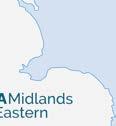








growth and £0.3bn in tax
Northern Ireland is working to make the case forinvestment.
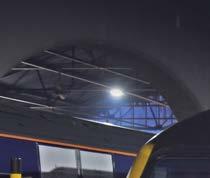


RIANorth
Rail in the North of England supports £7.7bn in economic growth, 154,000 jobs, and North is the voice of the supply community in theregion.

workstreams: decarbonisation; innovation; skills; value for money; anddigitalisation.
Produced by the decarbonisation working group, the report Greener, Faster, Better
which routes should be prioritised other low-carbon technologies such as battery orhydrogen.
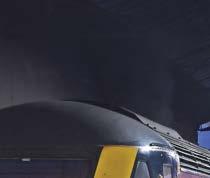

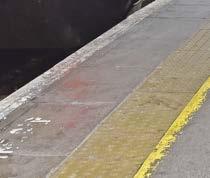
the greatest decarbonisation
Midland Main Line and TransPennine route – both of which the government announced it would electrify, as part of the Integrated RailPlan.
RIA Midlands & Eastern represents members across both the West and East in this region supports some 160,000 jobs and generates £8.3bn in economic growth plus £2.6bn in taxrevenue.
makes the case for rail investment, with its advocacy




The groups produce their own sets of priorities. London published in 2024.
including it calling for the full delivery of projects such as HS2, Midlands Rail Hub, and East WestRail.
published four priority areas in 2023. They are: visibility & stability (building strong relationships among regional stakeholders and suppliers); skills; innovation; anddecarbonisation.
RIA London & South
In London and the South, rail contributes £20.7bn to the economy, plus 305,000 jobs and £6.5bn in tax revenue. The rail network makes up essential infrastructure, unlocking business opportunities and
to the more than 18 million people who live in theregion.

latest priorities having been established in 2024. They are: a vision for the future of rail in the region; funding and investment in rail infrastructure for London & the South; and improving client-supplierrelationships.
RIA Wales & Western
supply chain across Wales and the South West of England. In this part of the UK, rail accounts for some 74,500 jobs and £3.6bn in economic growth (22,800 jobs and £1bn in Wales; plus 51,700 jobs and £2.6bn in the SouthWest).



Priorities for the region
Wales & Western Summit are:
1. Visibility of funding mechanisms and pipeline for the whole supplychain

2. integrated transport vision(s) for theregion
3. Innovation and testing opportunities and facilities to address costchallenges
4. Commitment and investment in developing industry skills and people and job creation).
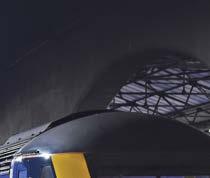
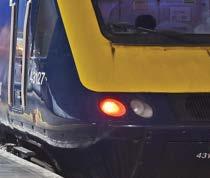
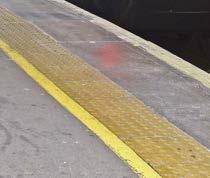
stock replacement are among the challenges facing the railways in Scotland, where operator ScotRail uses popular but ageing High Speed Trains on long-distance services. leave Inverness early on a May morning.




TONY STREETER





ABOVE: BR’s rolling stock renewals did not only cover the interRailpower freight diesels had been ordered: the 100 Class 60 Co-Cos would be built by Brush from 1989. At privatisation, they initially passed to new operator English, Welsh & ScottishRailway.
LEFT: By the late 1980s, Railpower had moved back towards a magazine-style front cover, rather than the news-story focus it had presented earlier the same decade. A striking example of this was the March 1988 issue, with its choice of the new Class 91 locomotive for the East Coast Main Line. Together with the BR Mk4 coaches, the ‘91s’
project for the London – Edinburgh route. The 225km reference was due to plans to run the GEC-designed/BR-built locomotives at 140mph, although in the end East Coast top speeds remained at 125mph.
While the Railway Industry Association’s remit may be wider than its forebears, rolling stock remains a core activity formembers.
In the late 1980s and early 1990s, BR was in its closing years but still introducing new trains and locomotives. Unsurprisingly, the association’s in-house magazine Railpower took a keen interest in the ongoing UK announcements and coverage.
BELOW: A core new family of commuting trains was launched in the late 1980s, although privatisation would mean that fewer ‘Networkers’ would be built than already in use by 1992, but Railpower still marked the roll-out of Electric Multiple Unit variants. Built by BREL/ABB and MetroCammell, Class 465s entered service with Network SouthEast that year.



‘Key Asks’: RIA’s recommendations for a better future railway
How can we create a better railway for the future?
It is a key question, which RIA and its members are perfectly positioned to answer,
stock replacement. An
operator replaced the
TONY STREETER
supply chain. The association has core topics. Each includes a series of detailedrecommendations.

the foundations for a successful railwayare…
Decarbonisation
Battery Electric Multiple Units to decarbonise the one third of the network which used.
network and extend to a
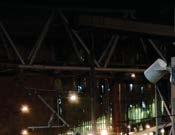


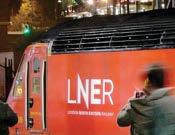


Rail, and other rail clients to work with suppliers and operators so they lower carbon solutions reduceemissions.
plan that maximises early carbon reduction and rail

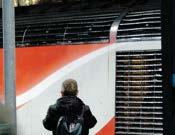




Sustain the commitment to
realised as soon aspossible.
is needed to ensure consistent policy can beimplemented.
businesses can hire dedicated and maintenance must place to help them dothis.
collection and representation of data, with the aim of a standard way to present data for easy
to ensure that this best practice works for allcompanies.

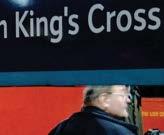
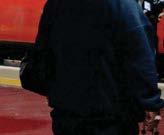
Marketplace or another
Exports & Trade
key export sector for both SMEs.
scheme andreintroduce.
possible.
rules, to minimise cost and




and ensure access and mobility for the skilledworkforce.
discrimination should be the consistent application of standards and support businesses.
Public procurement processes accessible pipelines as well as reciprocal rules on market access and domesticcontent.
Include an SME chapter possible.
HS2 & NorthernPowerhouse
with metro mayors, the railway industry, rail suppliers, and
In the short term, we must
taxpayer hundreds ofmillions.
to allow the completion of need.
We should learn the lessons of both HS2 to date, and international examples where countries build HSR more new network as quickly and possible. Innovation
phase.
adoption of new for radical The railway must adopt a ideas are pursued, with the required. and education, with the openness and
Long-term Strategy
the sector, which includes:
such as battery trains.
stock
new rail capacity where studies show it is needed –especially between Midlands soon be at full capacity. We need institutional so there is accountability for the commitments.
Major Projects
with the contractors and clients that are based on shared
culture and the ability to
back, share pipelines, and supply chain capability and skills, assets, and international, SME and expertise. Harness supply and whole life procurement pipelines and procurement models whilst of intellectual property and models.
franchise schedule and use techniques such as framework procurements with options for follow on orders. and export capabilities. The by: in rail infrastructure.
Private Investment the life cycle of standardised approaches map for opportunities to schemes. procurement practices. To sector.
supply chain and its people and capability internationally.
Pipeline Visibility
clarity, and the supply chain practice, this means:
Enhancements Pipeline now. retention of skills.
which suppliers can
• Let frameworks run across control periods.
Fair comparison of the costs with public
Procurement & Commercial
The public sector must follow best practice, and the supply chain will do the same. Best practice includes early supplier in framework procurements.
Procurement policy and procurement.
recommendations in the
approaches to procurement
consistent procurement process across the sector.
Rail Reform and pipeline of
Publish a clear timescale for all the steps necessary to fully establish Great British Railways.
and supply chain security.
well as bottom line
to take whole system, whole decisions. Powers that allow the Secretary of State to decisions should be
Retail & Ticketing
the future of rail retail.
interfaces are required to allow interoperability and enable core data, fares, and features. operate.
Rolling Stock
reduced whole life cost.
collaborate and consult on for interoperability. by 2040 should be replaced by an ambition to maximise of air quality by the most both direct decarbonisation trains should be
Skills
Promote rail and transport opportunities the sector to work on some of the most
retain talent in the sector.
certainty and supplier of all sizes need the certainty of forward pipelines of work which unlock the return on
in and retain a sustainable and skilled workforce.
with employer skills priorities. Work with the rail supply chain to understand skills needs, share and learn from best practice, and maximise the impact of
Build on supply chain and than the sum of their parts.
SMEs
supply chain, as required by the contractors should also apply chains.
adhere to the ethos of the Prompt Payment
Additionally, the implementation of our key asks for pipeline future of SMEs in the rail sector.
Sustainability & Social Value
In line with the Procurement
suppliers are not penalised for added costs accrued by for public procurements.
and other rail clients to work with suppliers and operators so lower carbon solutions but are emissions.
More details can be found at www.riagb.org.uk
New directions…
Revival… and revolution. The 1990s were marked by worldwide interest in light rail, as well as by new technology, and in the UK by privatisation. For both the Railway Industry Association and its members,
opportunities – as an explosion of new schemes and structures came about.
RIGHT: RIA members and the London Underground have long had a close relationship, and in 1990 Railpower was able to trumpet a major modernisation of the Central Line. With new signalling and new trains, the key east-west ‘Tube’ would in future feature automatic operation – although train operators would be kept for door operation andemergencies.



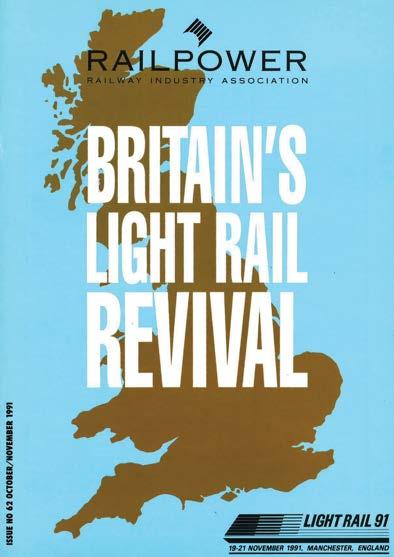

ABOVE: Coinciding with a conference in Manchester, Railpower focused on the UK’s light rail revival in late 1991. Greater Manchester’s Metrolink would open the following year. Using a mixture of new line and repurposed heavy rail routes, the network has grown ever since. Light rail lines have also opened in other cities including
BELOW: Privatisation of BR and its separation into discrete businesses brought new markets – not least for rolling stock. In future Rolling Stock Leasing Companies (ROSCOs) would own and procure trains, for use by the new train operators. Railpower marked this seismic change, illustrating it with one of the recently-introduced ‘Networkers’ (see also page 74).


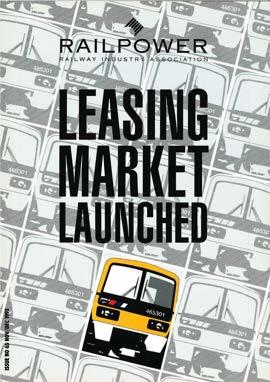
ABOVE C i idi ith f i M h t Ril
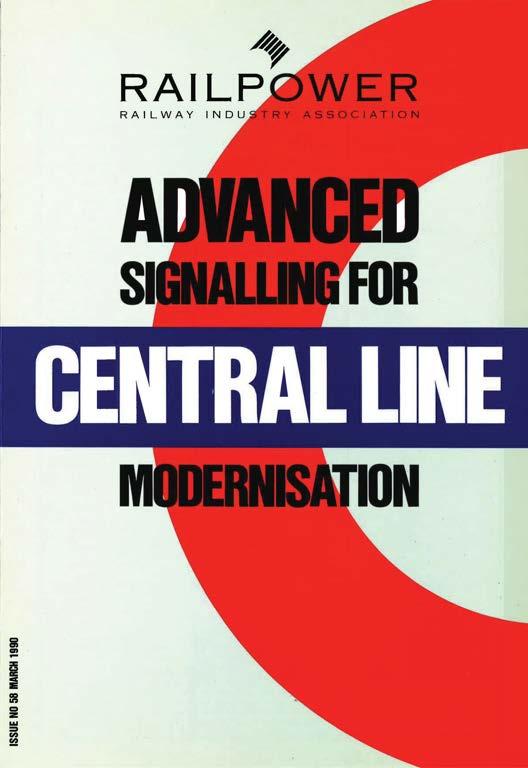
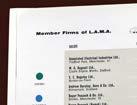


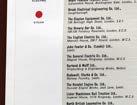

















In 1957 the LMA became the Locomotive & Allied Manufacturers’ Association of Great Britain (LAMA) and in 1963 produced a promotional book advertising its members’ wares. Some of the old names had been replaced by those of their successors – as well as being joined by new ones. LAMA/RIA






A growing and expanding membership







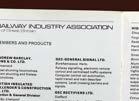

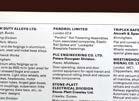
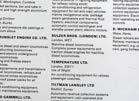







The founder members…
Sharp, Stewart & Company
Founded in 1852, but with a history going back to 1828. Merged into the North British Locomotive Company in1903.
Neilson & Company






From an initial nine companies that together made up the new Locomotive Manufacturers’ Association in 1875, membership of RIA has grown
to more than 400 today. Plus, while the names have changed, many of today’s companies have histories dating back to the early pioneers.







One of the world’s oldest railway industry companies, founded in 1836 and merged into the North British Locomotive Company in1903.

Avonside EngineCompany
Originating in 1837 but became known as Avonside Engine Company in 1864. Entered voluntary liquidation in1934.
Nasmyth Wilson & Company
Founded in 1836 under a previous name, the company stopped making locomotives under a deal involving the LMA. Ceased trading in1940.
Beyer, Peacock & Company
Dating from 1854 and later famous for the construction of Beyer-Garratt articulated locomotives, the company ceased building locomotives in1966.
J. Fowler & Company
Started in 1886 and famous for road traction engines, Fowler’s also produced railway equipment. In 1947 it merged with Marshall, Sons & Company.
Vulcan FoundryCompany
Another of the very earliest suppliers, Vulcan started in 1832 as Charles Tayleur and Company. It was taken over by English Electric in1957.
R. & W. Hawthorn
Starting in 1817 and gaining its later name in 1820 when William Hawthorn joined brother Robert, the company merged with A. Leslie & Company to create Hawthorn Leslie in1880.
Dübs & Company
Starting out in 1863, Dübs became part of the North British Locomotive Company together with Sharp, Stewart and Neilson in 1903.
The association’s conversion from LMA to LAMA and then RIA allowed its membership to expand – welcoming companies such as diesel locomotive-builder Brush of Loughborough. TONY STREETER
By the organisation’s centenary in 1975, it had become the Railway Industry Association that we know today. Once again, there are familiar names among the members… RIA
TONY STREETER
…and the members today
1Spatial Group Ltd
3Squared Ltd
5654 & Company Limited
AARC Professional Services Limited
Aarvee Associates Limited
ABA Surveying Ltd
Abacus Lighting Limited
ABB Ltd
Abi Broadley Consulting Ltd
ABLOY UK
Achilles Information Ltd
Acorel
ADComms
Advance Management Consultancy
AECOM
AEGIS Engineering Systems
AGH Engineering Ltd
Airquick Newark Limited
AJMS Consultants Limited
Alstom Transport UK Ltd
Altro Limited
The Aluminium Lighting Company Ltd
AMC Training and Consultancy Ltd
Amey Ampetronic Ltd
Anderton Concrete Products Ltd
Andromeda Engineering Ltd
Angel Trains UK Ltd
Anturas Consulting Limited
Apex Signalling Design & Consultancy Ltd
Aquarius Railroad Technologies Ltd
Arcadis
Arentis
Arthur D Little
Arthur Flury (UK) Ltd
Assesstech Limited
Asset Insights Limited
Asset International
Structures Ltd
Assisting Success Limited
Associated Utility Supplies Ltd
Assystem
Astute Consultancy Group
AtkinsRéalis
Atmo Technology Ltd
Aureos
Azora Signalling Limited
Babcock International Group plc
BakerHicks
Balfour Beatty Rail Ltd
BAM Nuttall Ltd
Barclay & Mathieson
Barhale Ltd
Beacon Rail Leasing Limited
Bechtel Limited
Belvoir Rail Ltd
Bender UK Ltd
BENNING UK
Bentley Systems (UK) Ltd.
BES Group
Birmingham Centre for Railway Research & Education BCRRE
Black Country Innovative
Manufacturing Organisation
Blu Wireless Technology
BMAC Ltd
Bovis
Bridgeway Consulting Ltd
British Steel
BSquare Controls Ltd
BTTC Infrastructure Ltd
BWB Consulting
C.A.S Rail Ltd
Cadenza Transport
Consulting Limited
Camlin Rail Ltd
Capgemini
Capita plc
Carter Fry LTD
Cavendish Consulting
CCL Universal Limited
Cembre Ltd
CFMS Services Ltd
Charcroft Electronics Ltd
CHG Electrical Ltd
Chrome Angel Solutions
Clarus Networks
CML
CMS Cameron McKenna
Nabarro Olswang LLP
Cognizant Worldwide Limited
Colas Rail Ltd
Comms Design Ltd
Complete Cyber
Concrete Canvas Limited
Connected Places Catapult
Cordel Limited
Costain Group PLC
CPC Consultancy Ltd
CPCS
Craig & Derricott Limited
Crayside Consulting
Creactive Design Transport Ltd
Croftstone
Management Limited
CrossTech
D/Gauge Ltd
D2 Global LTD
Dallmeier Electronic UK Limited
Danburykline
DB Engineering & Consulting
Decision Analysis Services Ltd
Delta Electronics (UK) Limited
Deploy Projects
Devin Scobie Consulting
DGA Group
DigiRail Limited
DigiSig Rail Group Ltd
Dorma+Kaba
Dura Composites Ltd
DW Windsor Ltd
Dyer Engineering Limited
Ebeni Ltd
Echion Technologies
Egis Rail UK Ltd Ltd
Ellis Patents Ltd Ltd
Enable My Team
EnerSys UK Ltd
EnGauged Ltd
Enigma Seven Ltd
ENOTRAC UK Ltd
Enterprise Bot
Epion Consulting Ltd
Epsilon Communications Ltd
ERG International UK Ltd
Erskine Nash Associates Ltd
ESG33 Ltd
York
Eversholt Rail Ltd
EviFile Limited
EYYA LTD
Fabrikat (Nottingham) Limited
Faithful+Gould
Field Consulting
Findlay Irvine Ltd
FirstClass Safety & Control Limited
Firstco Ltd
Flamgard Engineering Limited
Flexicon Ltd
Flotec Industrial Limited
FOR EV
Forte Engineering Ltd
Fortinet
Frankham Consultancy
Group Ltd
Frauscher UK Ltd
Frazer-Nash Consultancy Ltd
FuelActive
Fugro GeoServices (UK)
Fujikura Europe Limited
Fujitsu Services Limited
Furrer+Frey GB Limited
Galvanizers Association
Gardiner & Theobald LLP
Garic Ltd
GE Power Conversion UK Ltd
GeoAccess
Geobear
Geometreg Ltd
Glacier Energy
Gleeds LLP
Global Centre of Rail Excellence (GCRE)
Global Display Solutions Ltd
Goldcrest Events
Limited
GRAMM Barrier
Systems Limited
GrayBar Ltd
Grayling Communications Limited
Grinsty Rail Ltd.
Gripple Ltd
Gutteridge, Haskins & Davey Ltd (GHD)
Harsco Rail
HARTING Ltd
Hatch Associates Ltd
Management Limited
Haydn Evans Consulting Ltd - Ipswich
HDR Consulting Ltd.
Heatrod Elements Ltd
Helix Rail Ltd
Henderson & Taylor
Henry Williams Ltd
Hey Me Ltd
High Speed Rail
Solutions Limited
Hilti (GB) Ltd
Hird Rail Development Ltd
Hitachi Information Control
Systems Europe
Hitachi Rail Ltd
HITRANS
Howells Railway Products
Hugh James
Hydraulic Technologies
Rail Systems
Hygiene Pro Clean Ltd
IBM United Kingdom Limited
I-glo
Ikos Consulting UK Ltd
ILECSYS Rail Ltd
Incremental Solutions Ltd
Group Partners
Inframatic
Infrastructure Projects Services Limited
Ingram Networks Ltd
InoRail Ltd
Inside Out Group
Instrumentel
INTEGRATED DIGITAL
CCTV SYSTEMS LTD TA
THE CCTV COMPANY
Intelligent Transport Systems UK
Interimconsult Limited
Intuitive Interim & Executive Search Ltd
IPEX Consulting Ltd
ITAL
Jacobs UK Ltd
JBP
Jewers Doors Limited
JFG Communications Ltd
Jnction
JNP Group Consulting
Engineers Ltd
Jobson James Rail Ltd
JurnyOn
K2C Rail Limited
KeTech Systems Ltd
KH Engineering Services Ltd
Kier Transportation
Kilborn Consulting Ltd
Kilfrost Limited
Knorr-Bremse Rail Systems (UK) Ltd
Konux
Krause and Hall Ltd
L.B. Foster Europe
L.C. Switchgear Ltd
Laing O’Rourke
Lancashire & Midlands
Stations Ltd
Lenz Ltd
Lindapter International
LML Products Ltd
Lontis Limited
Loram UK Limited
Lost Group Limited
Loughborough University
Lowery Ltd
LP Brussels Ltd
LPA Group Plc
LTD SIGNALLING LIMITED
Luso Electronic Products Ltd
Mace Limited Machines With Vision Limited
The Maine Group
Mainframe
Communications Ltd
Mallatite Ltd
The Manufacturing Technology Centre
Matisa (UK) Ltd
Mattei Compressors Ltd
Maynard Design Consultancy Ltd
Mbpc Infrastructure Limited
McCODA Limited
MegaTech Projects
Mercury3 Consult Mermec
Millgate Ltd
Milton Advisers Ltd
Mitsui & Co Europe plc
Mobius Networks
MoniRail Ltd
Morgan Sindall Construction & Infrastructure Ltd
Mosdorfer Rail Ltd.
Motion Rail
Mott MacDonald Group
Movement Strategies
MPEC Technology Ltd
MRC Engineering
MTMS Ltd
Muirhead
MyPeople Group
Nathan Butler
Consulting Limited
National Composites
Centre Operations Ltd
Natural Cement
Neology UK Ltd
Net Company
Netcall Plc
Netcompany Body
Newsom Consulting Limited
Nextec Engineering Ltd
NGE Contracting Limited
Ninefeb UK
North PB Limited
Nortrak Ltd
Octavius Infrastructure Ltd
OCU Services Ltd
Omnicom Balfour Beatty
One Big Circle Ltd
Onwave Ltd
OpenTrainTimes Ltd.
The Orange Train Wash Company Ltd
Ove Arup and Partners
PA Consulting Services Limited
PACE Infrastructure Solutions Ltd.
PACE Networks Limited
Pandrol
Park Signalling Ltd
PB Design & Developments Ltd
Pell Frischmann
Pennant International
Group plc
Petards Rail
Phoenix Contact UK Ltd
Plowman Craven Limited
Pole Star EAM Ltd
Powercube Limited
Pragmatex Limited
Premier Rail Pits
Priestman Goode
Proicere Ltd
Project Leaders
QTS Group Ltd
Quest Global Ltd
R S Clare & Co Ltd
Racine Railroad Products UK Ltd
Rail Asset Development Ltd
Rail BI UK LTD Limited
Rail Innovations
Rail Products UK Ltd
Rail Sidings Limited
RailETC Limited
RailSense Solutions Limited
Railway Project Services
Consulting LTD
Rainford Solutions Ltd
Ramboll UK Ltd
Ray Chapman Ltd
RazorSecure Limited
Redline Industrial
Supplies Limited
Renew Holdings Plc
REO UK LTD
Resonate Group Ltd
Reznet Ltd
Ricardo Rail Ltd
Ridge and Partners LLP
Riding Sunbeams Apollo Ltd
Rock Rail Holdings Limited
Rosehill Polymers
Route Reports Limited
Rowe Hankins Limited
RSK
Samuel James Engineering Limited
S and L Roberts (Railway Consulting) Ltd
S E I Interconnect
Products (Europe) Ltd
SAVE Project Services Ltd
Schaltbau Machine
Electrics Ltd
Scheidt & Bachmann UK Ltd
Schneider Electric
Schweizer Electronic Ltd
Seetru Limited
SELLA CONTROLS
SEMP Ltd
Sensat Digital Ltd
Sensonic-UK Ltd
Severn Partnership Ltd
Siderise (Special Products) Ltd
Siemens Mobility Limited
Signal Software Limited
Signature Rail
SigTech Rail Consultancy Ltd
SilverRail Technologies
SKANSKA CONSTRUCTION
UK LTD
SLC Rail – Sable
Leigh Consultancy
Smart
Component Technologies
Softech Rail Ltd, UK
Solaris Lighting Limited
Southdowns Environmental (part of the RWDI Group of Companies)
Southside Rail Training Ltd
SPL Powerlines UK Ltd
Sqills
SRS Rail System Ltd
SSE Energy Solutions
Stadler Rail Services UK Ltd
Staytite Rail
STC INSISO LTD
Stephenson Harwood
Story Contracting Limited
SVM Glasgow
Synergy Rail Limited
SYSTRA Ltd
TATA Consultancy Services
Telent Technology Services Ltd
Temple Group Ltd
TenBroeke Company Limited
Tended Limited
Thomas Brown Engineering Ltd
Tilt Consulting Limited
Timeless Engineering Ltd
Tony Gee & Partners
Track Access Services Ltd
- a Pennant International Ltd Company
Tracsis plc
Transformers and Ltd
Transmission Dynamics
TransportWorks
Tratos Ltd
True North Rail Limited
TSN Land & Property
Consultants Ltd
TUV Rheinland UK Ltd
TXM Consult
UB Infrastructure Ltd
UK Power Networks Services
UKES Rail Ltd
The Ultimate Solution Partnership
Ulusoy Railway Systems UK Ltd
Unipart
Universal Signalling Ltd
- The Institute of Railway Research (IRR)
University of Nottingham
University of Southampton
UXcentric Ltd
VAES Ltd
Vanguard Rail Solutions
Veda Associates
Velociti Solutions Limited
Vendigital
Vertex Systems Engineering
VICTORY FASTENERS LTD
Viper Innovations
The Virtual Tour Experts
Visualise Info
Vivacity Rail Consulting
Voestalpine Signaling UK Ltd
VolkerLaser Ltd
VolkerRail
Vossloh Cogifer UK Limited
VVB Engineering (UK) Ltd
Wabtec
WAGO Limited
Wakatipu Consulting Ltd
Waterman Aspen Limited
Water-Trak Limited
Waymap
Wentworth House
Rail Systems Ltd
Westermo Data
Communications Ltd
Will Baxter
Visual Communications
Wills Bros Civil Engineering Ltd.
Wincanton Holdings Ltd
Window Seater
WISKA UK Ltd
Withers & Rogers LLP
Worldline UK
WSP
Xenconsult LTD
Xrail Group Limited
Yeltech Ltd
YESSS (A) Electrical Ltd
Zebraware Limited
Zetica Ltd
Zircon Software Limited
Zonegreen Ltd

Where next? The exciting railway of the future
Around the world, rail has an excitingfuture.
Expanding populations, economic growth, decarbonisation
change… all these drivers need railway expansion to deliver them and cope withdemand.
In the UK alone, a 2024 report commissioned by the Railway Industry Association from consultancy Steer predicts that passenger demand will
grow by anything up to 97% by 2050. That equates to average growth of up to 3% perannum.
While such forecasts are inevitably based on certain assumptions – especially over a roughly 25-year time period – the trend is clear. As the Research on Long-Term Passenger Growth

that under any scenario GB rail demand will grow well beyond the capacity provided for today, growth that government policy,
rail services and operators will need toaccommodate.”
It’s not just about passengers. Over that same period of time, the UK government has announced a target to grow railborne freight by roughly75%.


Add in further key targets such as the need to move away from fossil fuels towards
alternatives, and the conclusion is ever-more clear. There is no

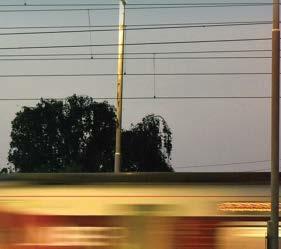
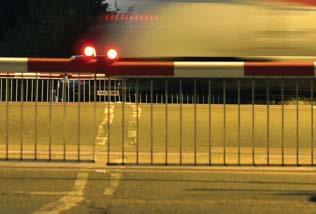

other way forward for railways multi-decadeinvestment.
RIA members know this of course, and so does the association itself. The UK’s rail champion has now been lobbying for investment in the industry, both at home and overseas, for a century and ahalf.
So, what might the railway look like in another 25 or 50 years, when RIA celebrates its 175th or 200thanniversaries?
of change. Key among the developments is the forthcoming creation of new public body Great British Railways and the putting back together of ‘track andtrain’.

Gazing into a crystal ball is always risky – but the trends are alreadyclear.
Most immediately, the UK itself faces another period
Just as it has in the past, reorganisation can bring disruption and risks to the supply chain – but opportunities too. RIA has been clear in its ‘Five Tests’ for GBR on aspects such as communication and continuity ofwork.
Done right, GBR has the potential to be the vehicle for many of the UK’s rail demands, and for ongoing investment to accommodate not only the growth we know is coming, but also passenger and freightexpectations.

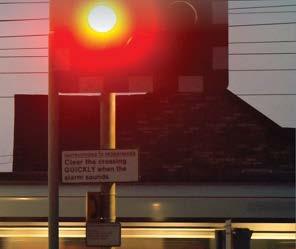

Recent announcements by the UK government on investment in local and regional transport have also been most welcome. Compared with other developed countries, the UK has in recent decades fallen behind in creating the light and urban rail systems that will be so important in making cities of the future ‘liveable’.
Such declarations are positive indications of what is to come, even if much of the detail remains to bedelivered.
Seamless travel in2075
So, back to wider predictions of thefuture…
Look around the world, and there are already cases of the integrated, modern transport systems that will be essential to achieve society’s future aims. Such examples will increasingly become people’s everyday experience, as rail’s crucial role becomes clear – in personal mobility,
change, supporting economic growth… and simply holding future societiestogether.
Schemes such as integrated, subscription-based ticketing are in place now on the continent, for networks that already combine longerdistance heavy rail with trams, buses and other local transport. For passengers, this is not only travel; their ‘last mile’ iscovered.
Having started in Japan during the 1960s, high-speed long-distance rail is increasingly the norm around the world. Ever more, that includes direct international traveltoo.
When it comes to technology, we can expect an ever-greater role for wideranging digitalisation (whether in terms of signalling, support functions or ticketing), plus
and alternative fuels. Such trends alreadyexist.
What will long distancerail travel look like in 2050 or 2075? This is the East Coast Main Line just north of Helpston in Cambridgeshire.
European Train Control Signalling is coming to this section of the London to Edinburgh route this decade; it
route to receive it. Whether the level crossings will still be here in 25 years…?
TONY STREETER
Take all this together, and railways in 2025 are at the start of a revolution likely to be to diesel and electric motive power from the steam engines that were built by the early members of the Locomotive Manufacturers’ Association.
paid jobs and economic activity, but wellbeing and growth further ahead. Rail projects regularly bring greater than predicted
economic boosts which last decades are literally builtin.
RIA’s decarbonisation strategy argues that a further third of the network needs to be
total up to roughly twothirds. The remaining third can be left without wires – which means that alternative forms of traction to diesel must be developed.
On one of the many routes that are not
a Diesel Multiple Unit heads across the famous Ribblehead Viaduct on the Settle – Carlisle Railway, with Ingleborough beyond.
TONY STREETER
In the UK, the opportunities for investment are huge – and
so. Take just one simple statistic: around 38% of Great Britain’s network is currently an average of closer to 60% in the European Union, and nearly 100% inSwitzerland.

in many jurisdictions are must be made, and investment
other priorities such as health, defence, andeducation.

At the heart of all this development is the Railway Industry Association. With its 150 years of advocacy, RIA is well placed to support the wider railway in making sure our countries and societies receive the transport systems theyneed.
Much work has already beendone.
RIA advocates tirelessly – regionally, nationally andinternationally.
It supports members through training, through conferences, through liaison and work onstandards.
Follow RIA’s recommendations, and the railways will be put well on the way to reaching that positive future. Given the various predictions – from rising demand to climate change – it’s essential that this happens. Countries around the globe are increasingly convinced of thattruth.

Yet while the short-term challenges are real, railway development brings not only immediate wins in terms of well-
And it has developed a series of detailed ‘Key Asks’ (see page 76) on the topics that will drive the railway industryforward.
So, when RIA celebrates its 200th anniversary in 2075, imagine a world in which the following isnormal…
Passengers seamlessly book tickets without thought or worry, to jump on a light rail service near their home that interchanges with high-speed long-distance and international trains. They then have a choice of regional or even tram-train services to deliver them right to their destination at the otherend.
They’re updated at all times on the progress of their own personal journey and, because of the advances made in predictive maintenance and remote AIbased monitoring, they know it





20 CAGR (Compound Average Growth Rate) calculated 2023/24 –2049/50 Growth uplift shown relative to 2018/19 pre-pandemic peak







will be completely reliable. It’s work on the way (should they so wish) and their journey has been carbon-neutral. Through an app, they’ve even been able to send any bags onahead.
Their trip has been overseen – while passengers don’t need to know this – that has helped large numbers of freight trains now also using thenetwork.

More and more people will use this clean and integratedsystem.




None of that is science such things can be delivered. Among RIA’s now more than 400 members, and among its networks and groups, the expertise and experience is all there to make ithappen.
Indeed, all this exciting future vision needs to be

realised is for populations and their politicians to fully buy into it. RIA is there to explain why they must – and the signs are increasinglygood.
So, just as the RIA of 2025 is far bigger, experienced and wide-ranging than the Locomotive Manufacturers’ Association of 1875, there is much more to comeyet.
The last 150 years are only the start.
demand scenarios, as presented in the Steer report Research on Long-Term Passenger Growth. All of them predict a rise in the number of journeys over coming years.
STEER/RIA





Join RIA’s ongoing story!




ABOVE FROM LEFT TO RIGHT:
For 150 years, the Railway Industry Association and its forebears have continuously fought for railsuppliers.

within the industry, with include:






Over 100 events a year – for networking, exhibiting, and sponsorshipopportunities Including events, visits and Policy and lobbyingevents. round tables with key stakeholders (politicians, clients and Dedicated Business and LeadershipGroups.
Regions network, providing advice, resources, events, and support.








LMA/RIA
Become part of one of the UK’s oldest trade associations
press@riagb.org.uk. For details on how to join, see www.riagb.org.uk/JoinRIA membership@riagb.org.uk.

Representing your business interests – and providing dialogue. Ensuring your voice is heard by clients, and industrystakeholders. andsupport.
experts with wide-ranging knowledge, expertise, contacts,
exports, innovation, policy, public
Unrivalled business
Rail Business Daily

Public relations, advertising, weekly bids and tenders, and work-winning resources, opportunities.







growthopportunities. Targeted industry updates to your inbox on topics you.
technology and railresearch. your work and interests, across the supplychain. exportopportunities.
UK rail expertise and products overseas. Opportunities to join overseas railexhibitions.
interests and
Engaging with hundreds of stakeholders, including clients.
Preferential hire of RIA space. Preferential use of our spaces events.
Exclusive access for
For
If
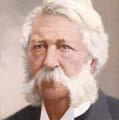





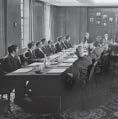
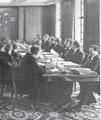


Steam to Digital








